Likes
- Offers so much car for the money on the used market.
- Very good build quality.
- Huge range of equipment as standard.
- Mechanically proving to be very reliable.
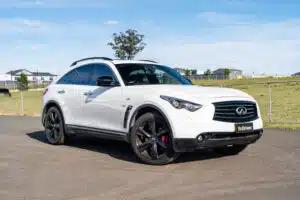
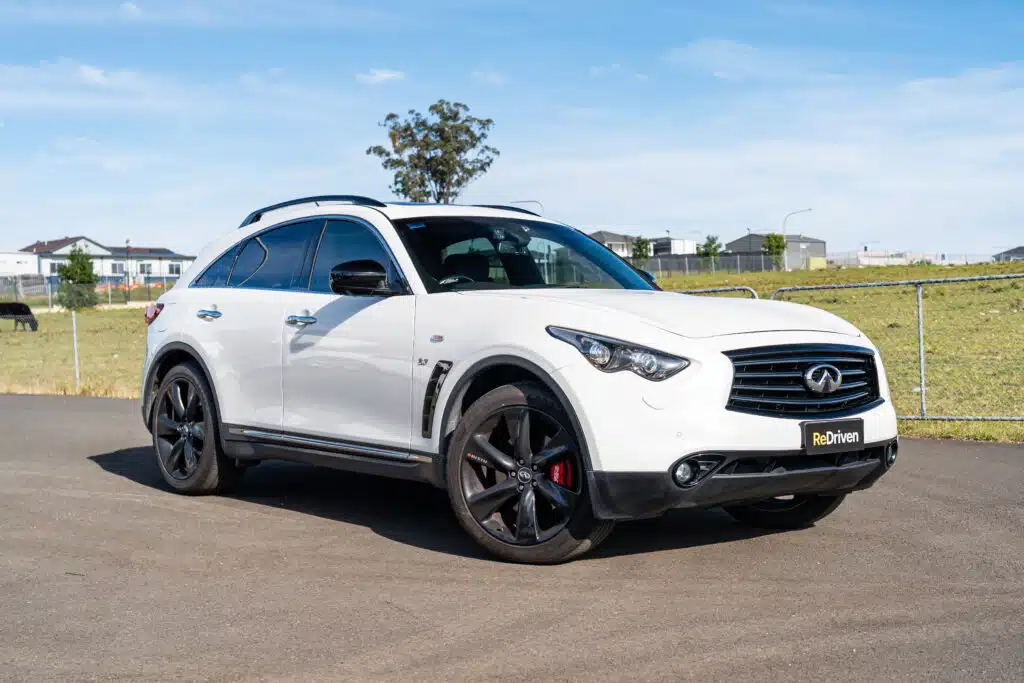
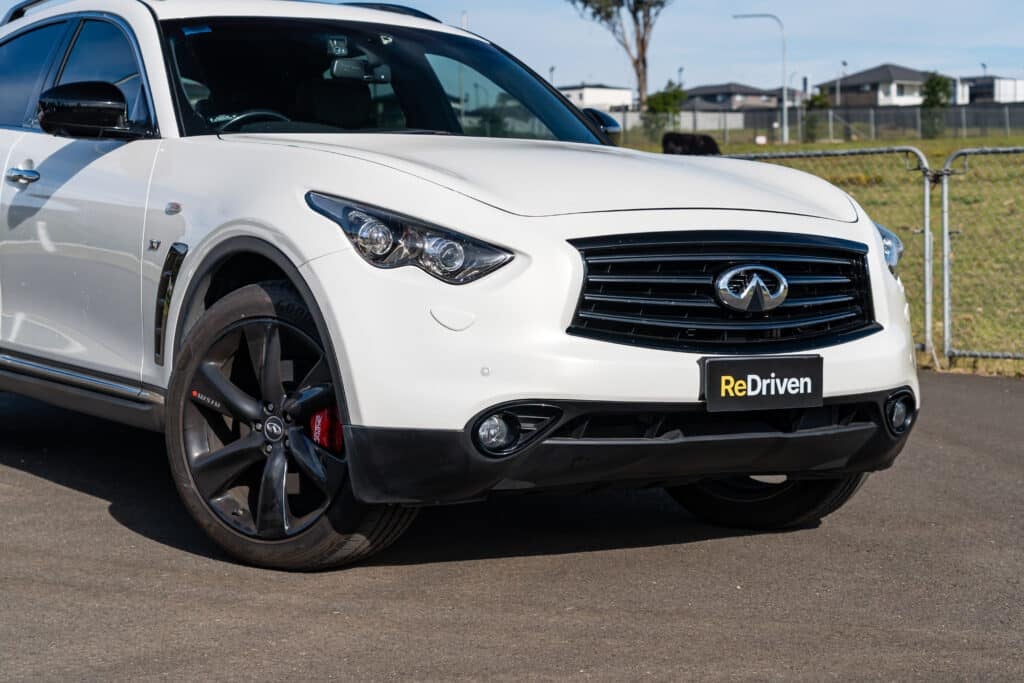
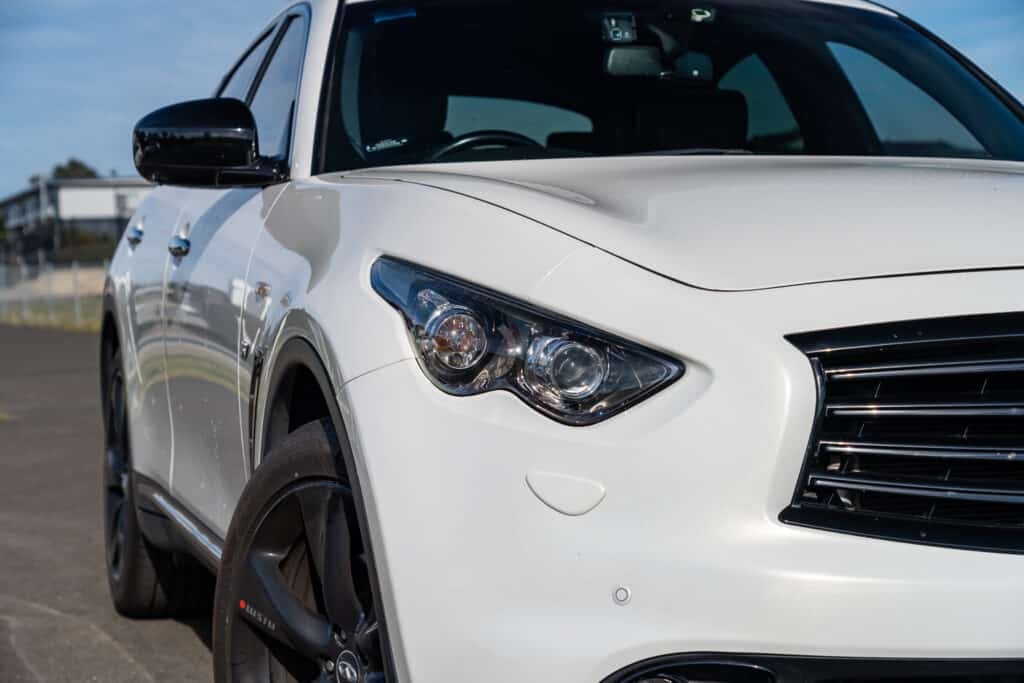
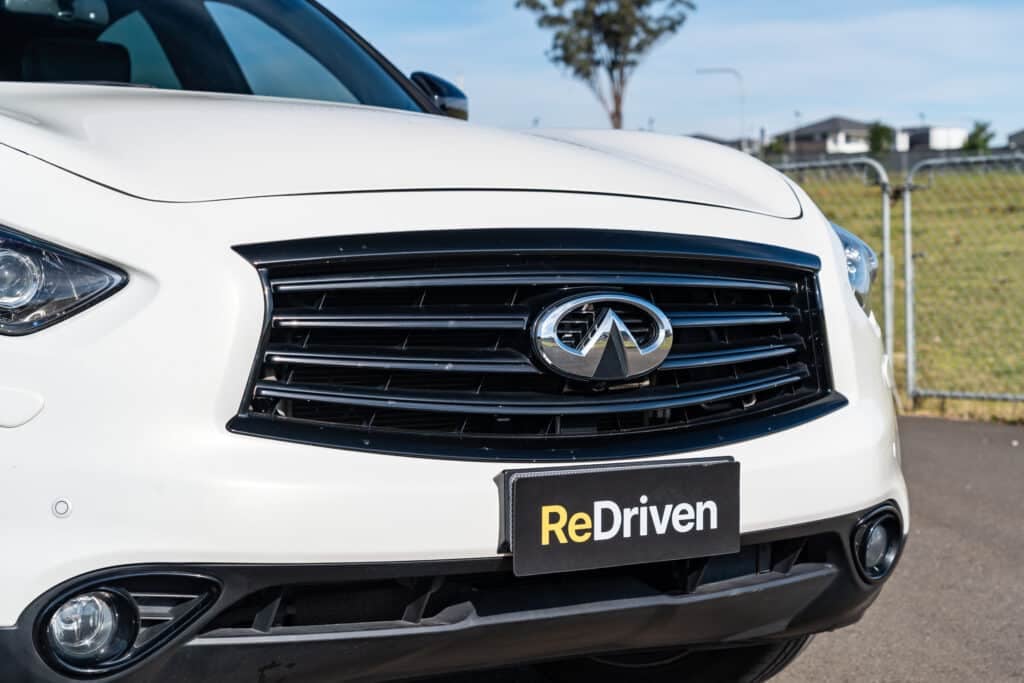
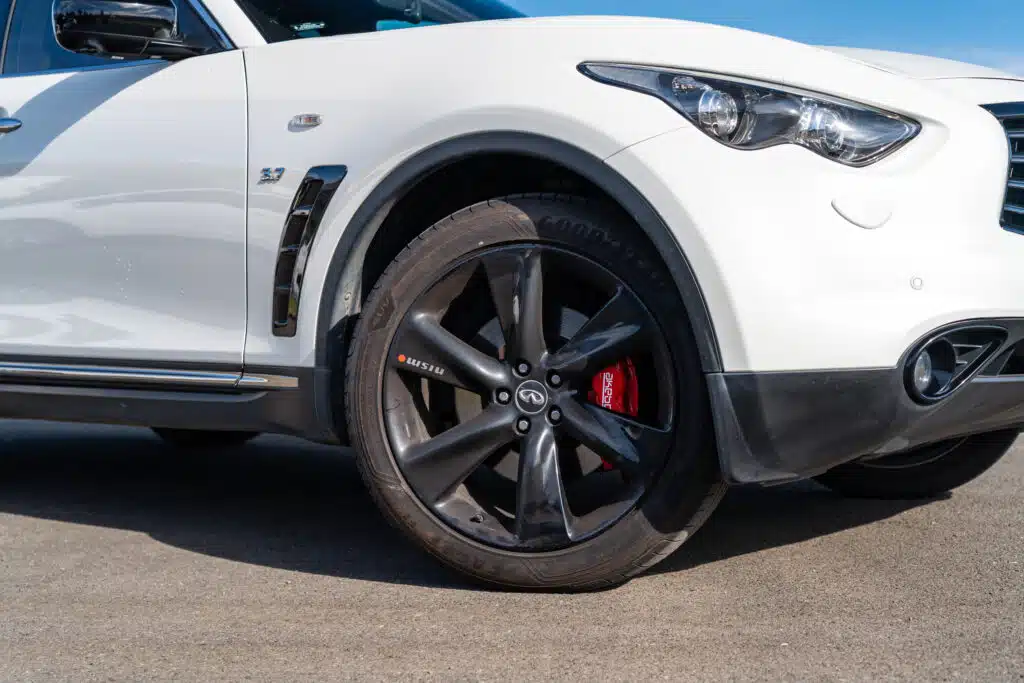
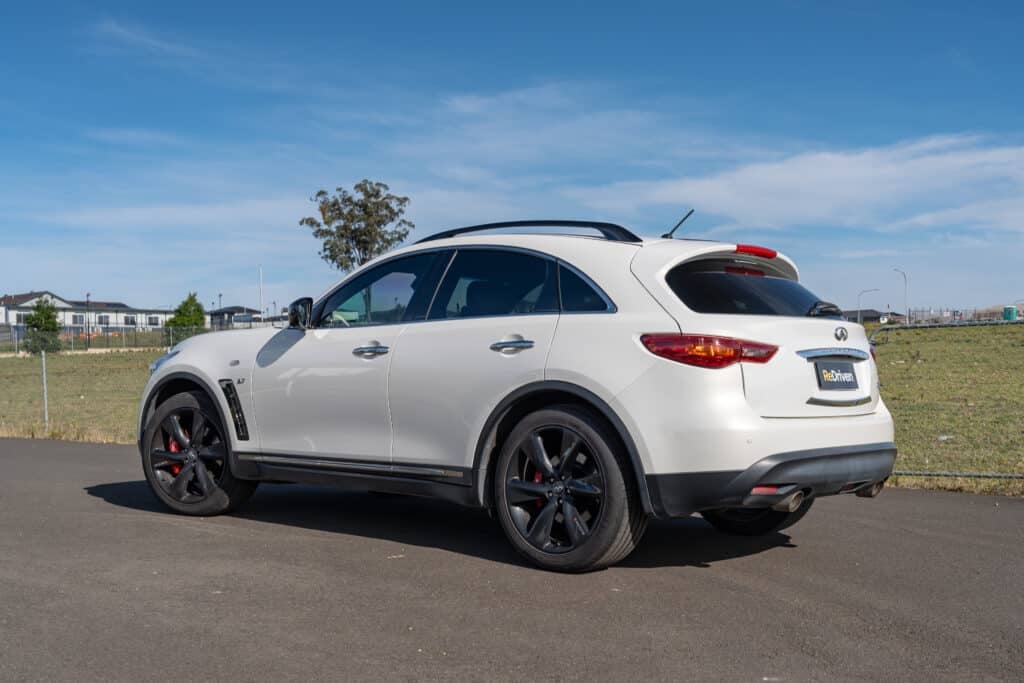
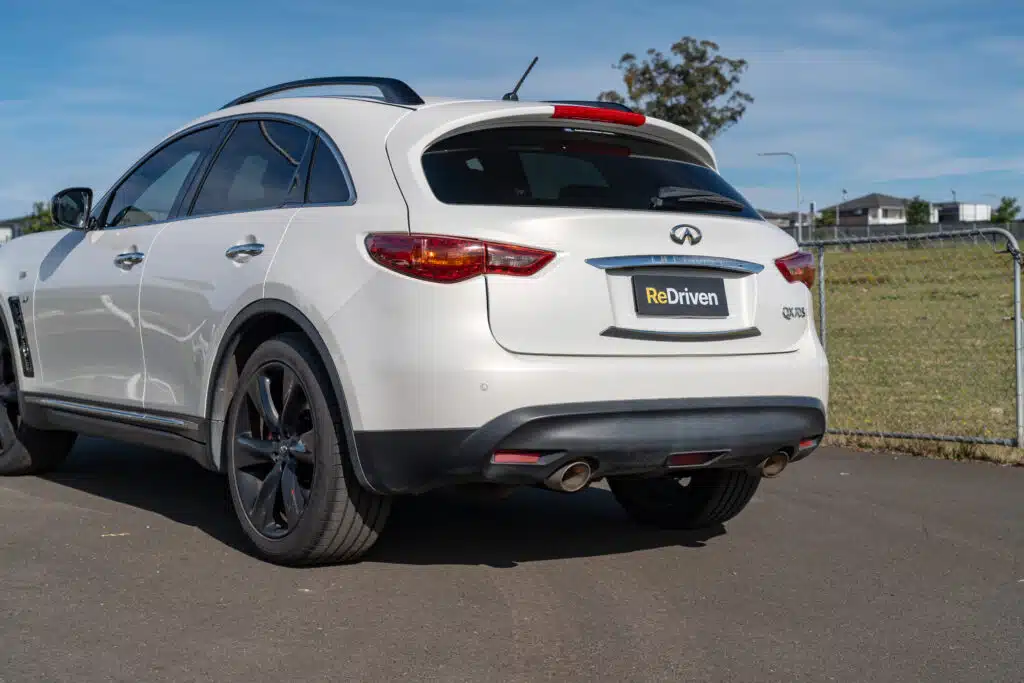
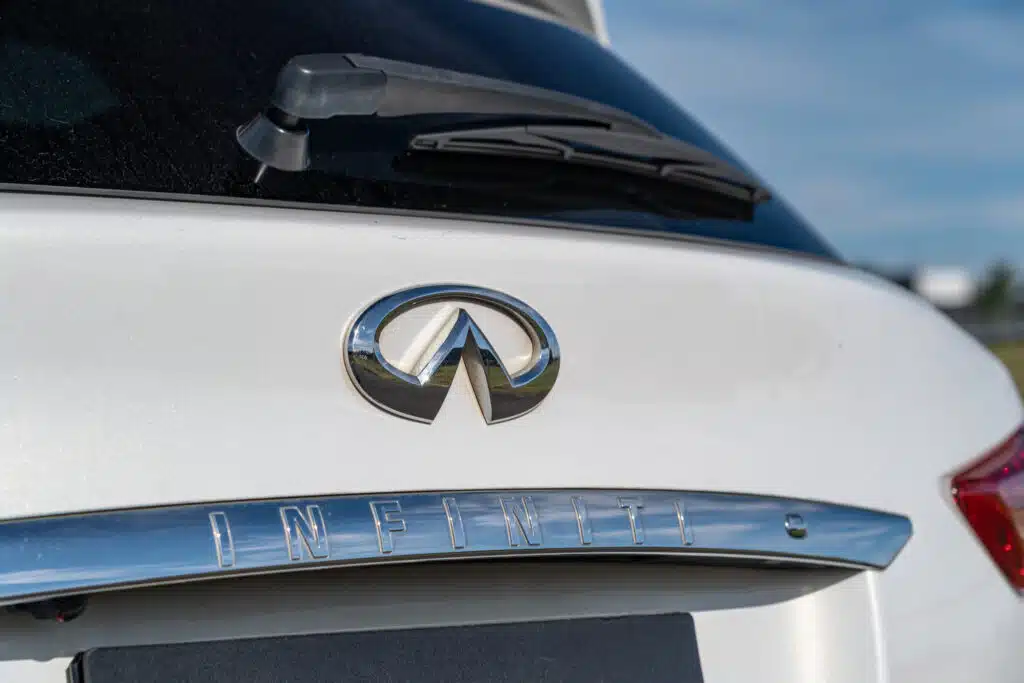
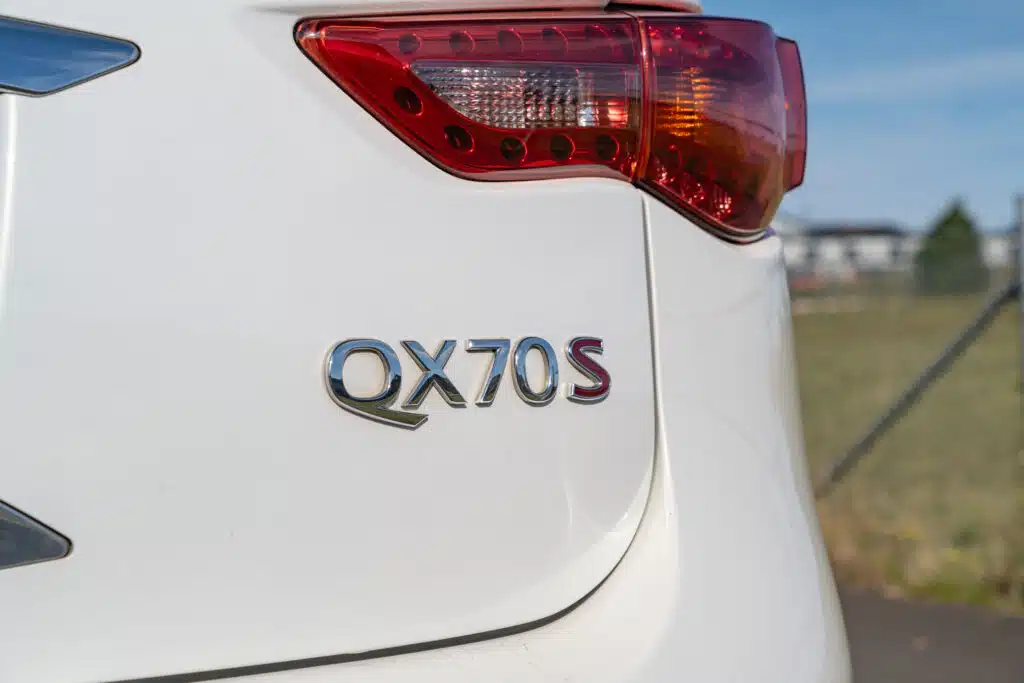
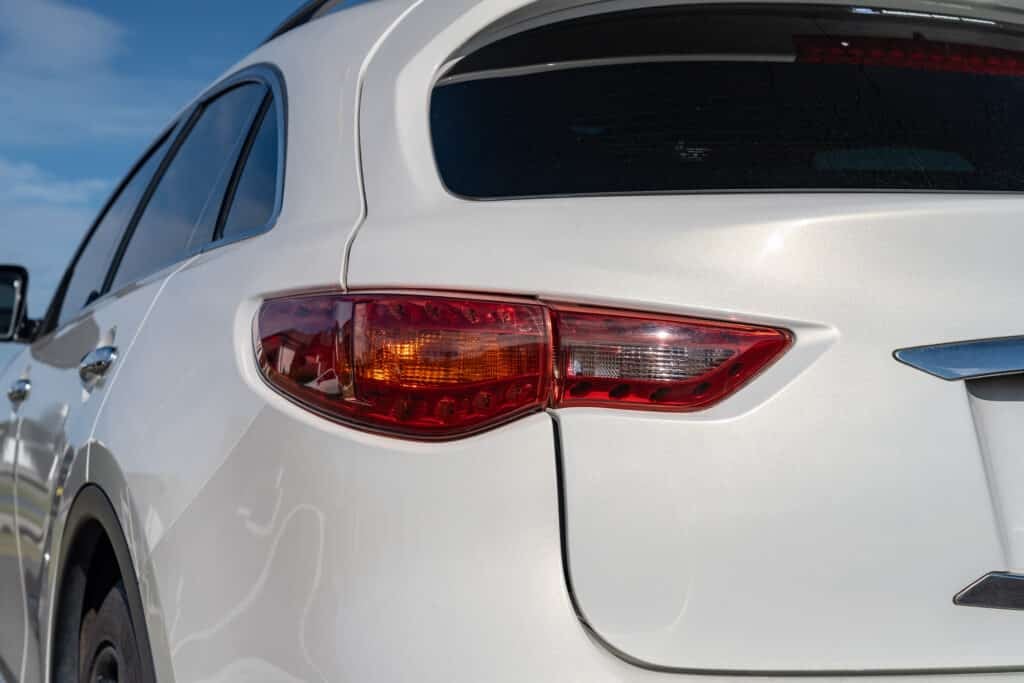
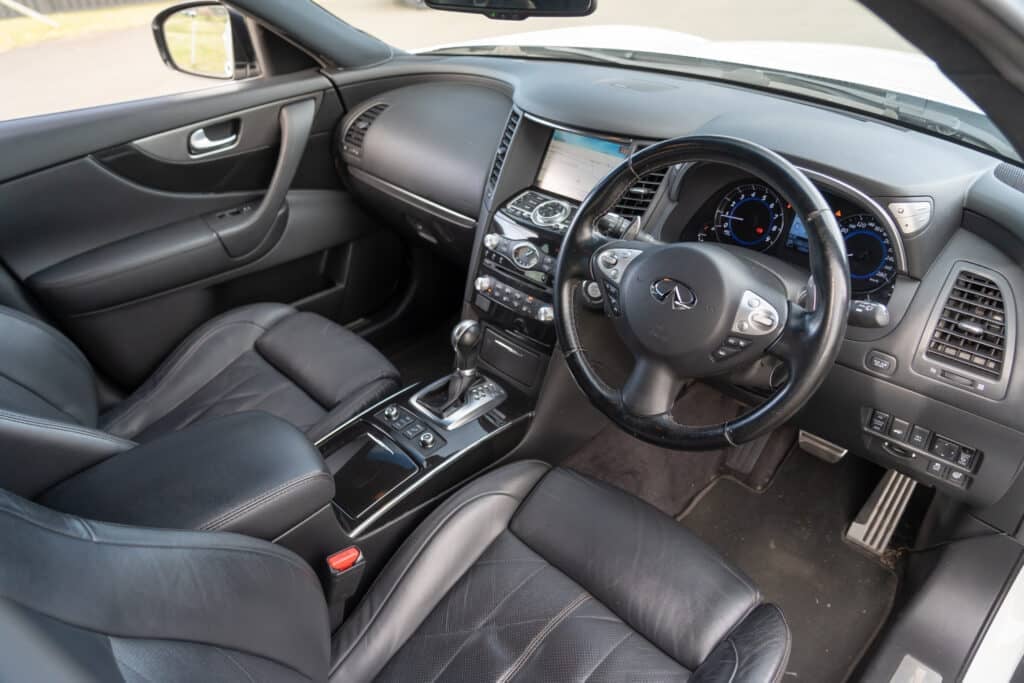
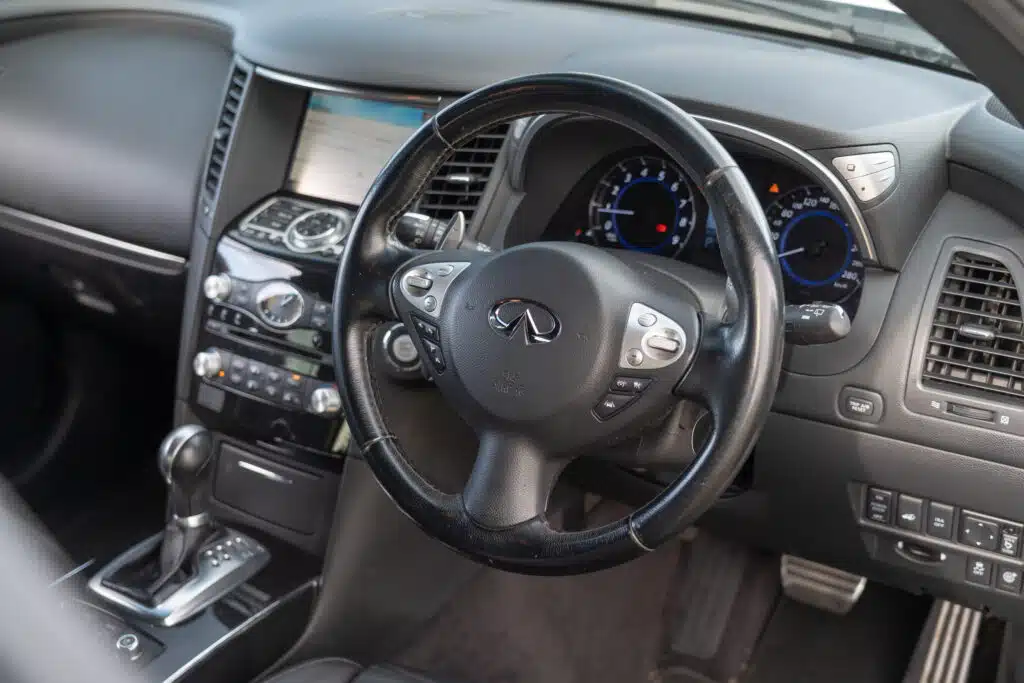
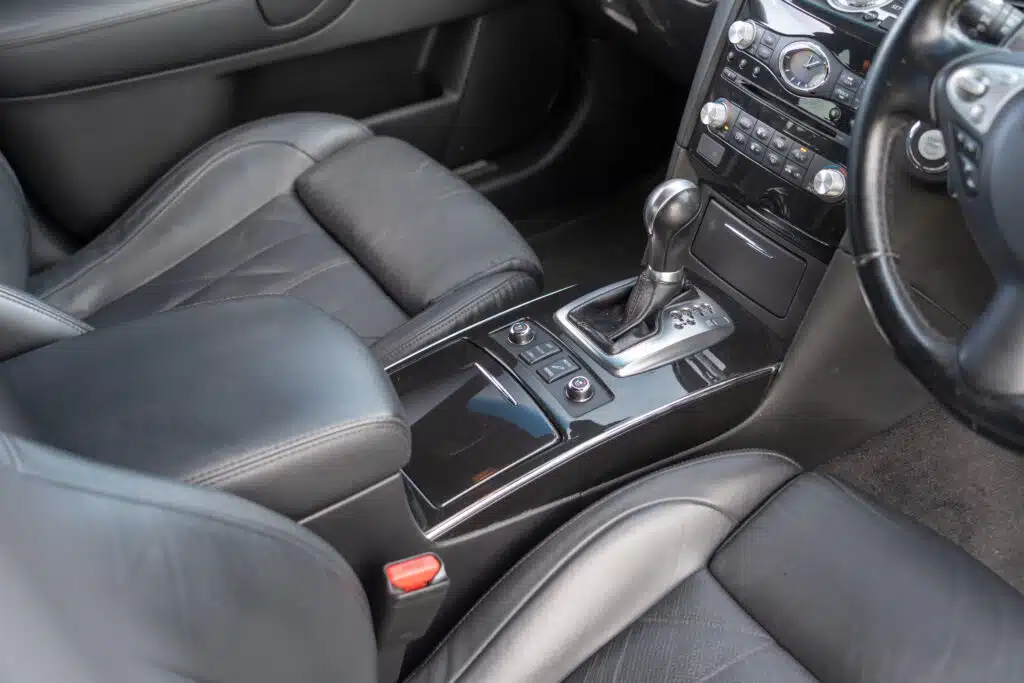
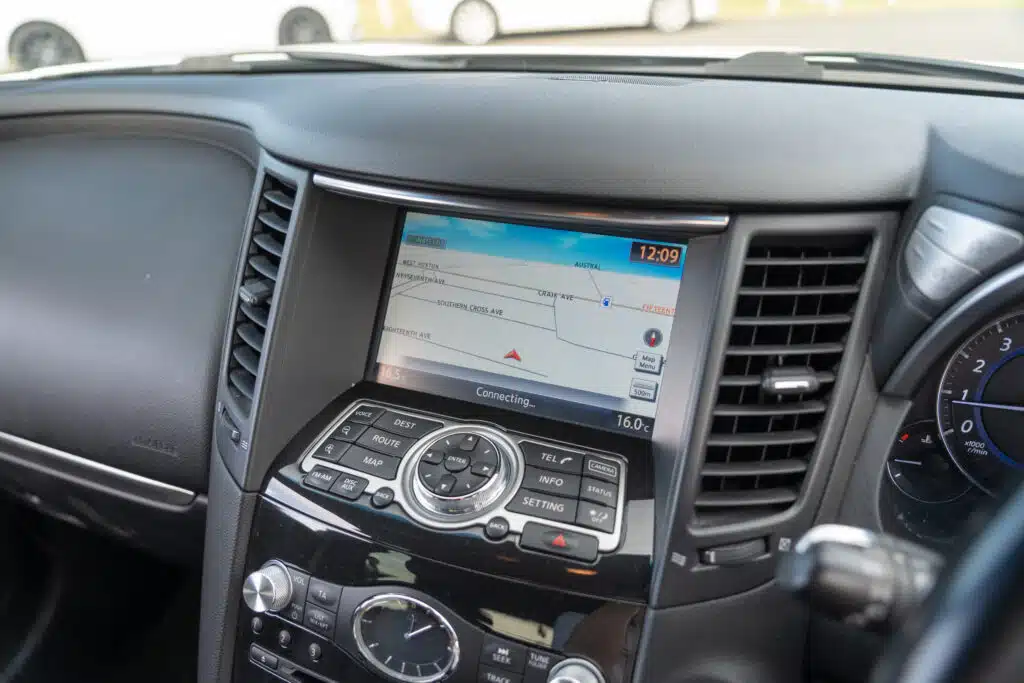
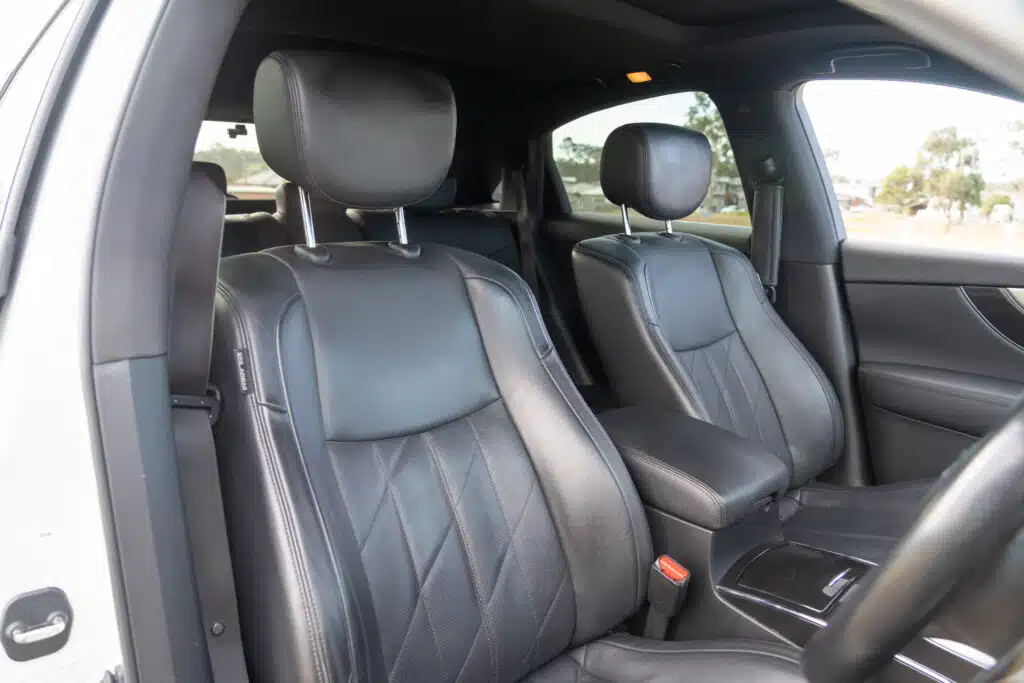
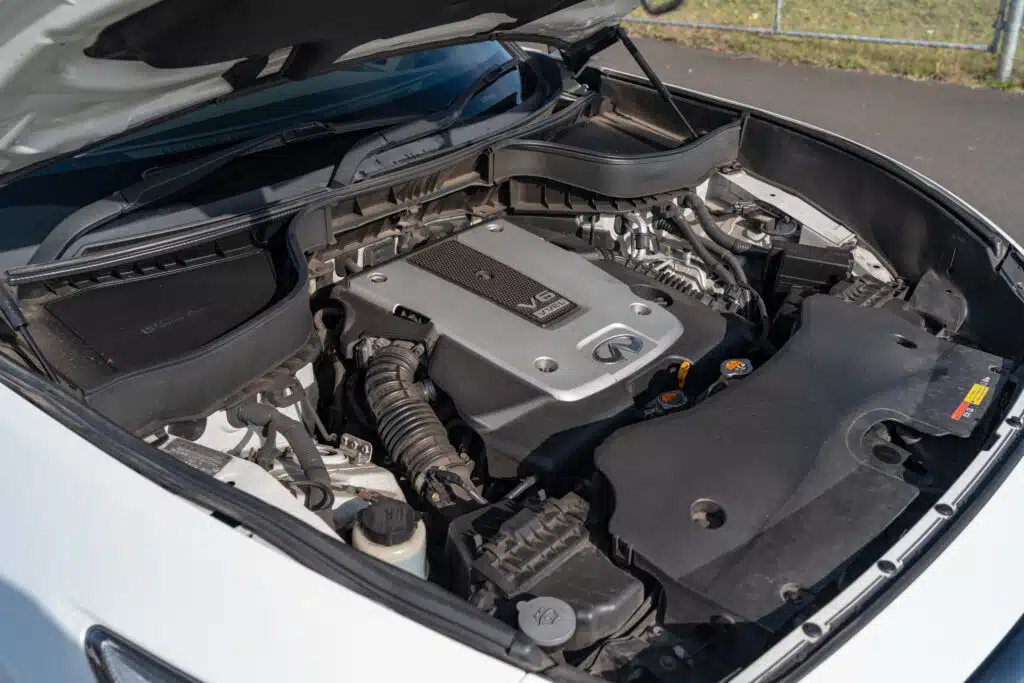
First up, the name. The S51-generation Infiniti FX first landed in Australia in 2012, even though it had been around globally since 2009. And initially, it followed the traditional Infiniti naming strategy, the FX37 and FX50, with the numbers denoting the engine displacement. But just a year later in 2013, Infiniti decided to unify its global branding, and the FX became the QX70. Beyond the badge, the updates were fairly minimal, a few small aesthetic tweaks here and there, some minor interior upgrades, but essentially, it was the same car underneath.
Locally, the range remained consistent throughout its short life here, with three trim levels offered: GT, S, and S Premium. Even the base GT was impressively well-equipped for the time, featuring leather upholstery, a sunroof, sat-nav, a premium Bose sound system, and an electrically adjustable steering column. Step up to the S and you scored a more aggressive body kit, 21-inch alloys, sports suspension, and paddle shifters. The top-spec S Premium brought in intelligent cruise control, lane departure warning, and a clever Around View Monitor, which was pretty futuristic tech in its day.
Under the bonnet, the FX/QX70 offered two petrol-powered options in Australia. The FX37/QX70 GT came with a 3.7-litre naturally aspirated V6 producing 235 kW (315 hp) and 360 Nm (266 lb-ft), while the FX50/QX70 S packed a thumping 5.0-litre V8 pushing out 287 kW (390 hp) and 500 Nm (369 lb-ft). Both engines sent power to all four wheels via a seven-speed automatic transmission with adaptive shift logic. Overseas, there was also a 3.0-litre V6 turbo-diesel (the FX30d), and while a few have made it to Australia as grey imports, it was never officially offered here. And if you’re a die-hard F1 fan, you might want to chase down one of the ultra-rare FX Vettel Editions, a limited-run V8-powered special developed with Sebastian Vettel himself. Cool, very cool.
Despite its performance, features, and bold styling, the QX70 simply didn’t sell. Infiniti was a newcomer to Australia, and without a strong brand presence or widespread dealership network, it struggled to make an impact. Even though the QX70 undercut rivals like the BMW X6, Porsche Cayenne, and Lexus RX on price, it was overlooked. And now, on the used market, depreciation has been savage, you can pick one up for a fraction of its original asking price, which means you’re getting a hell of a lot of car for the money. But of course, there’s a catch, only time will tell if these bargain prices keep dropping, or if the QX70 will eventually find cult status and stabilise.
And then there’s the elephant in the room, Infiniti no longer officially operates in Australia. They pulled out in 2020, which means local support is basically non-existent, and sourcing model-specific parts can be a real pain. Some parts can command a premium simply due to their rarity, but thankfully, the QX70 shares plenty with Nissan products under the skin, including its V6 and V8 engines, brake components, and even suspension hardware. So for the most part, the mechanical bits are affordable and relatively easy to find if you know where to look.
As a used buy, the QX70 is definitely not perfect. It’s a proper premium SUV and comes with the quirks and potential headaches that go with that territory. Issues that we cover all of that in more detail in our “What Goes Wrong” section below. But for those willing to take the plunge, the QX70 represents one of the most interesting, underrated and under-appreciated performance SUVs on the used market, bold looks, big power, and serious value. Just be prepared for the reality of owning a car that was never properly supported here to begin with.

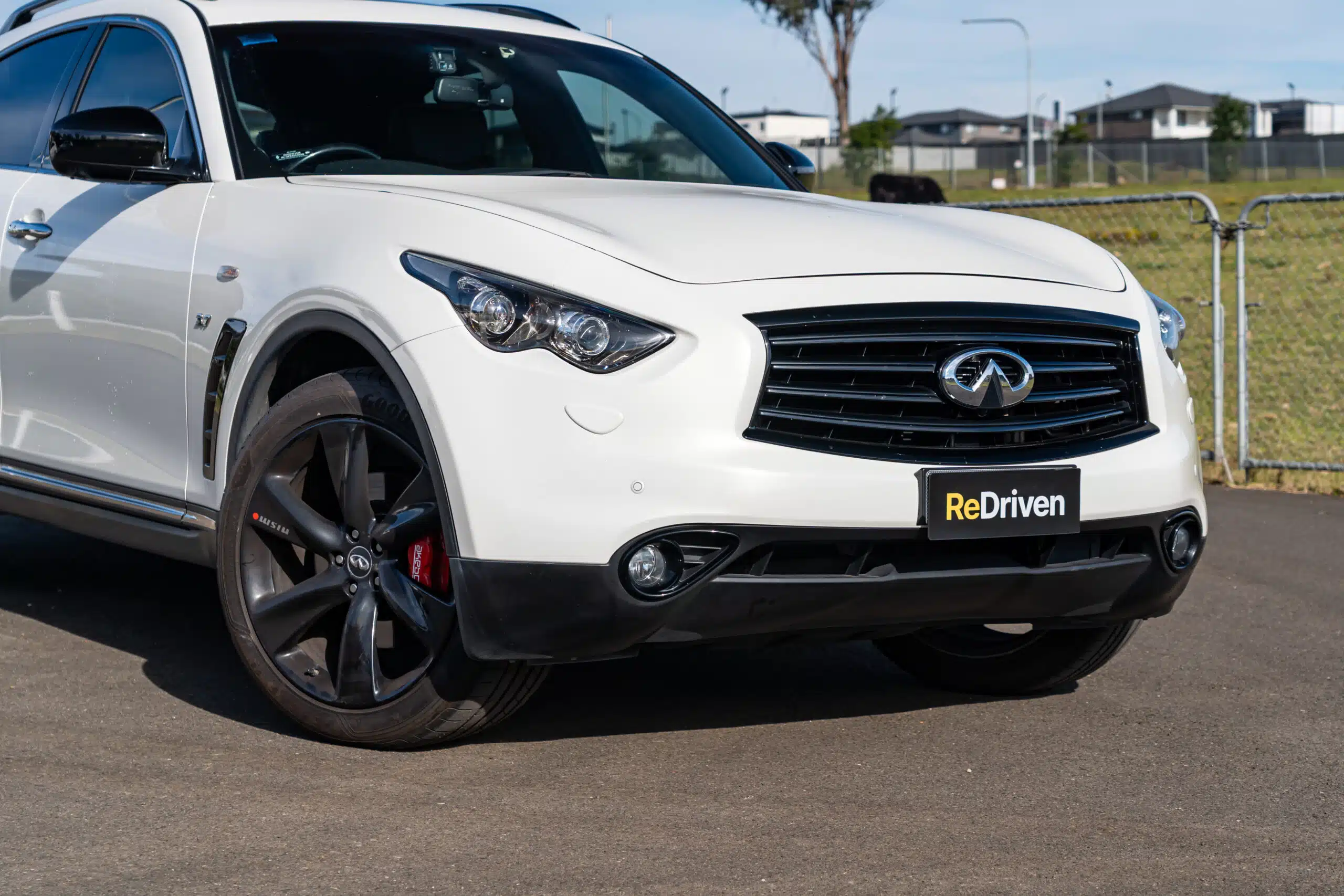
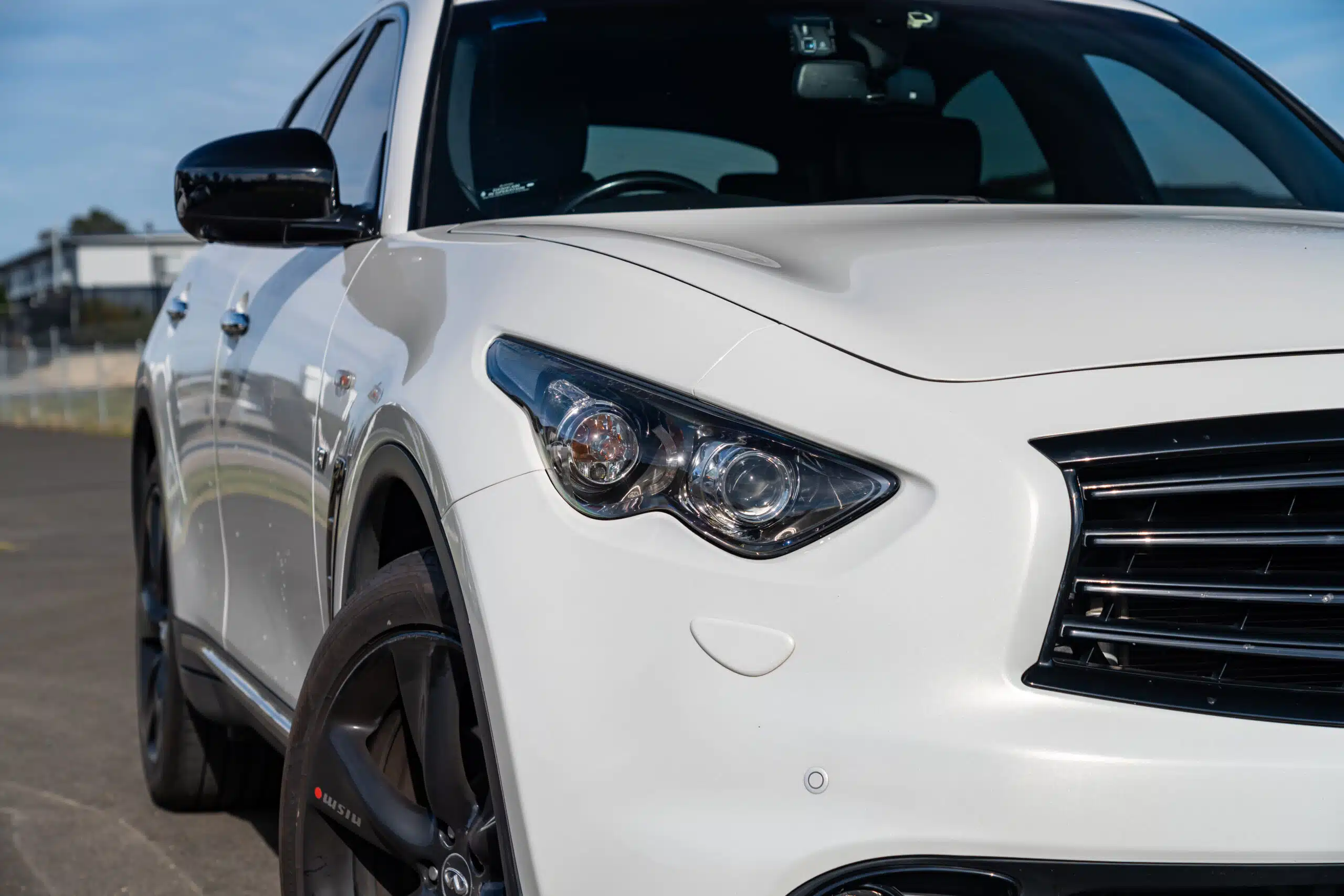
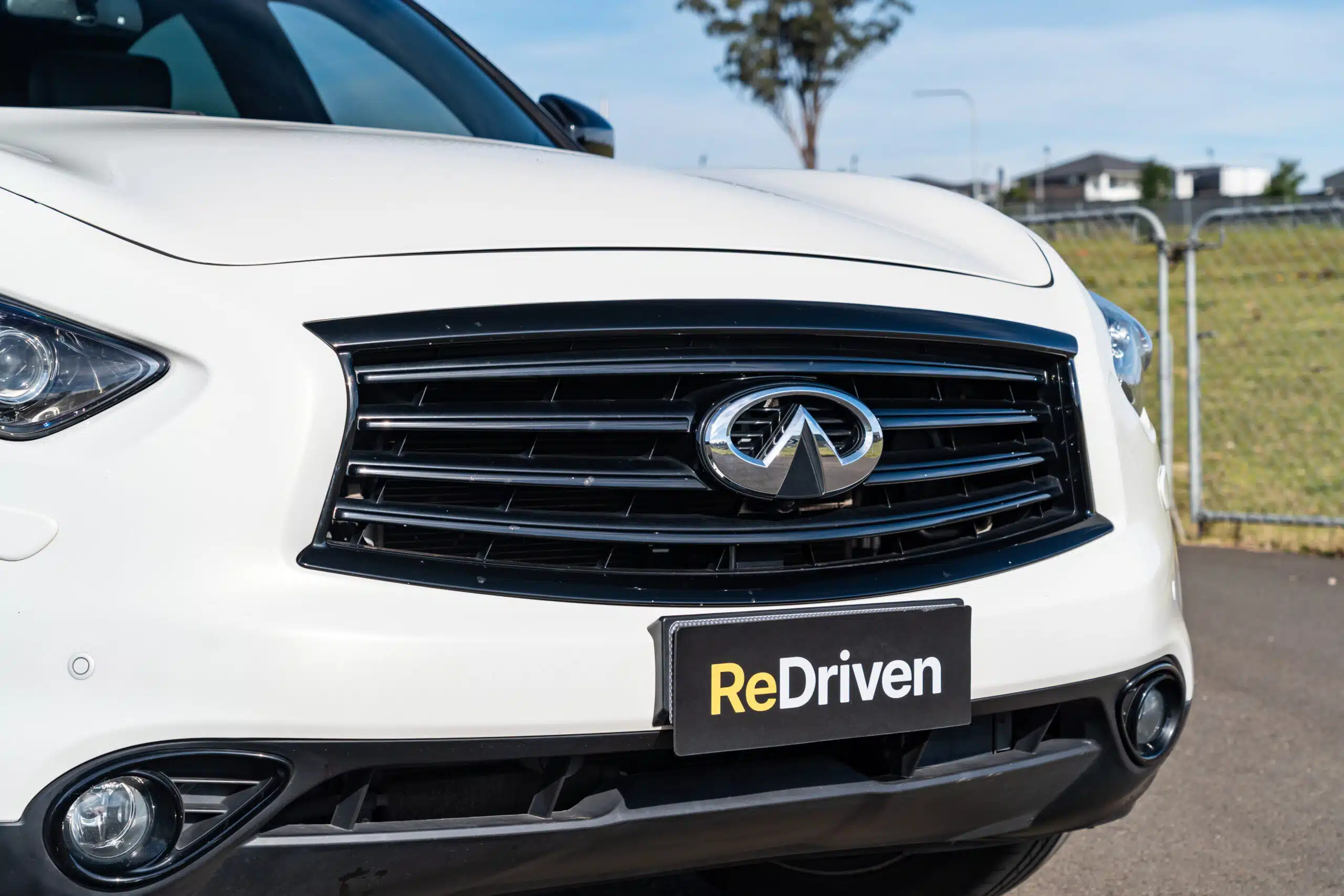
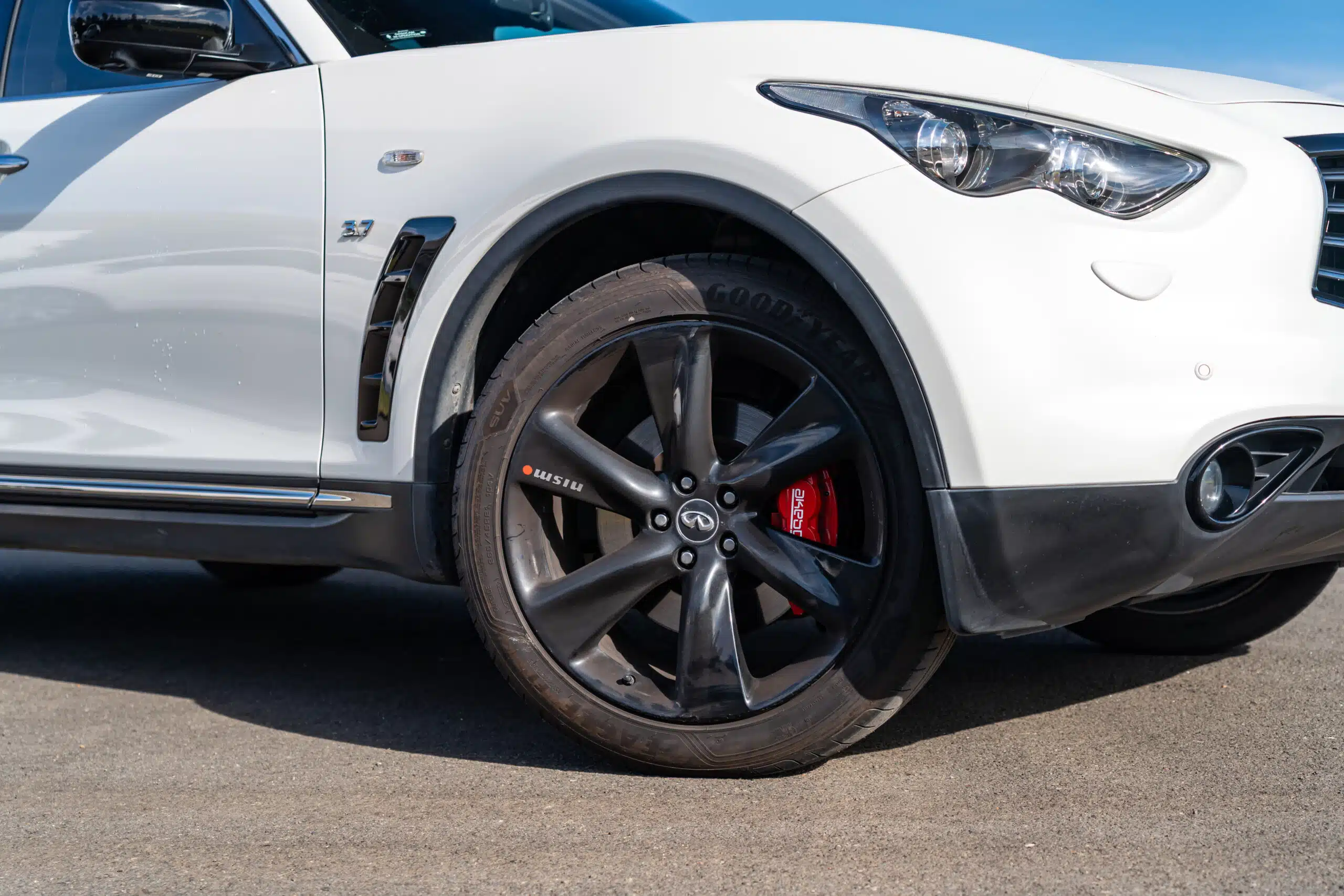
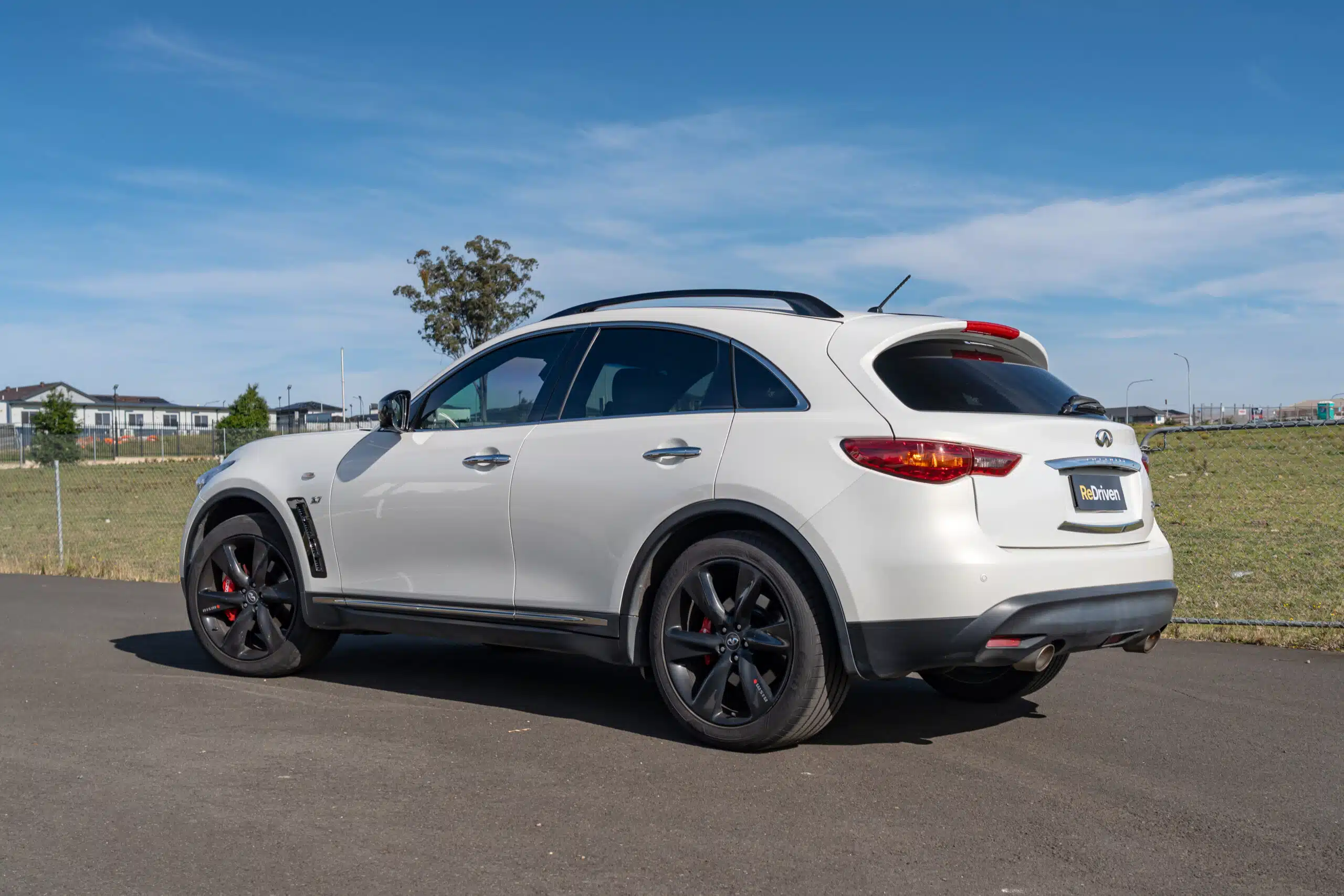
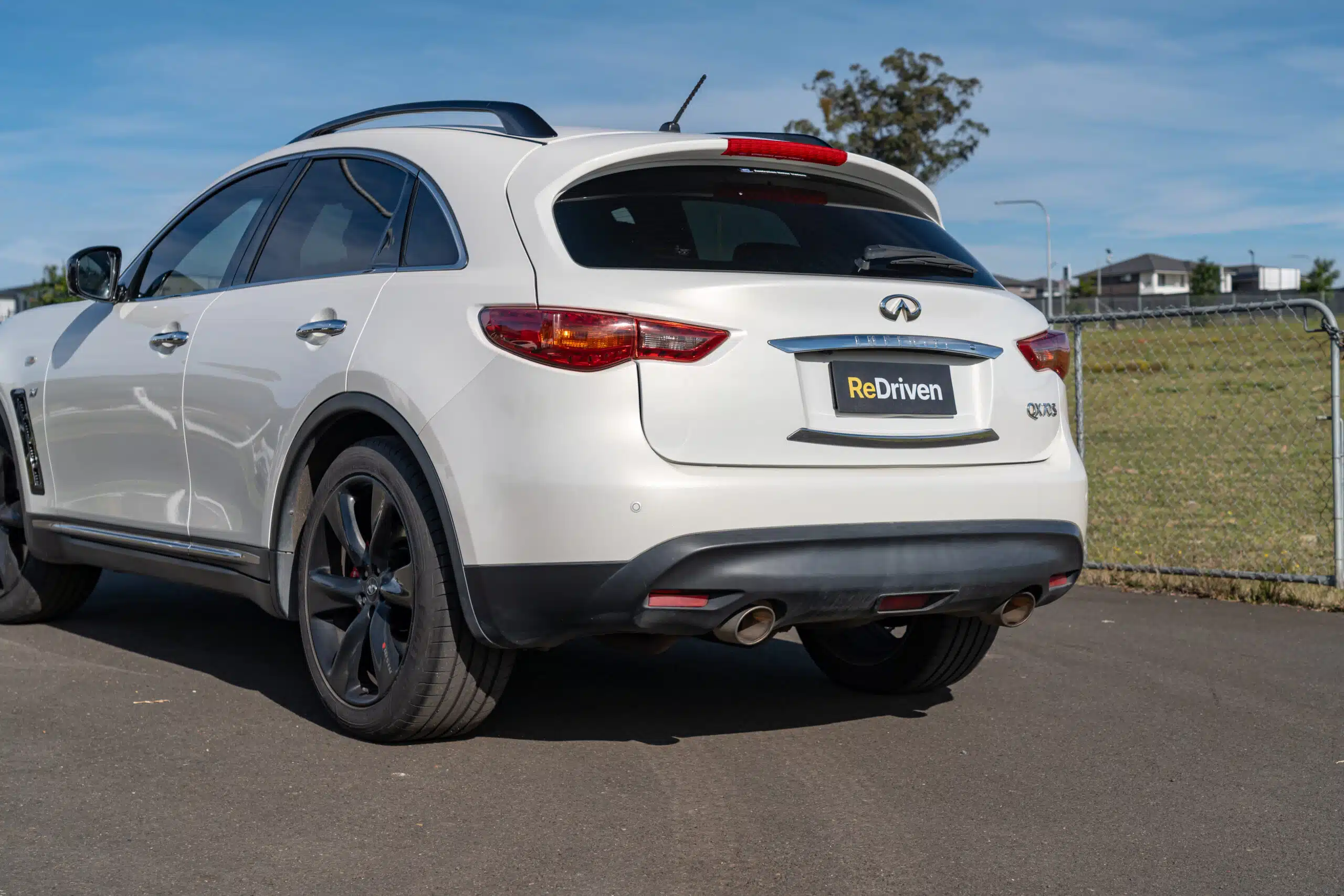
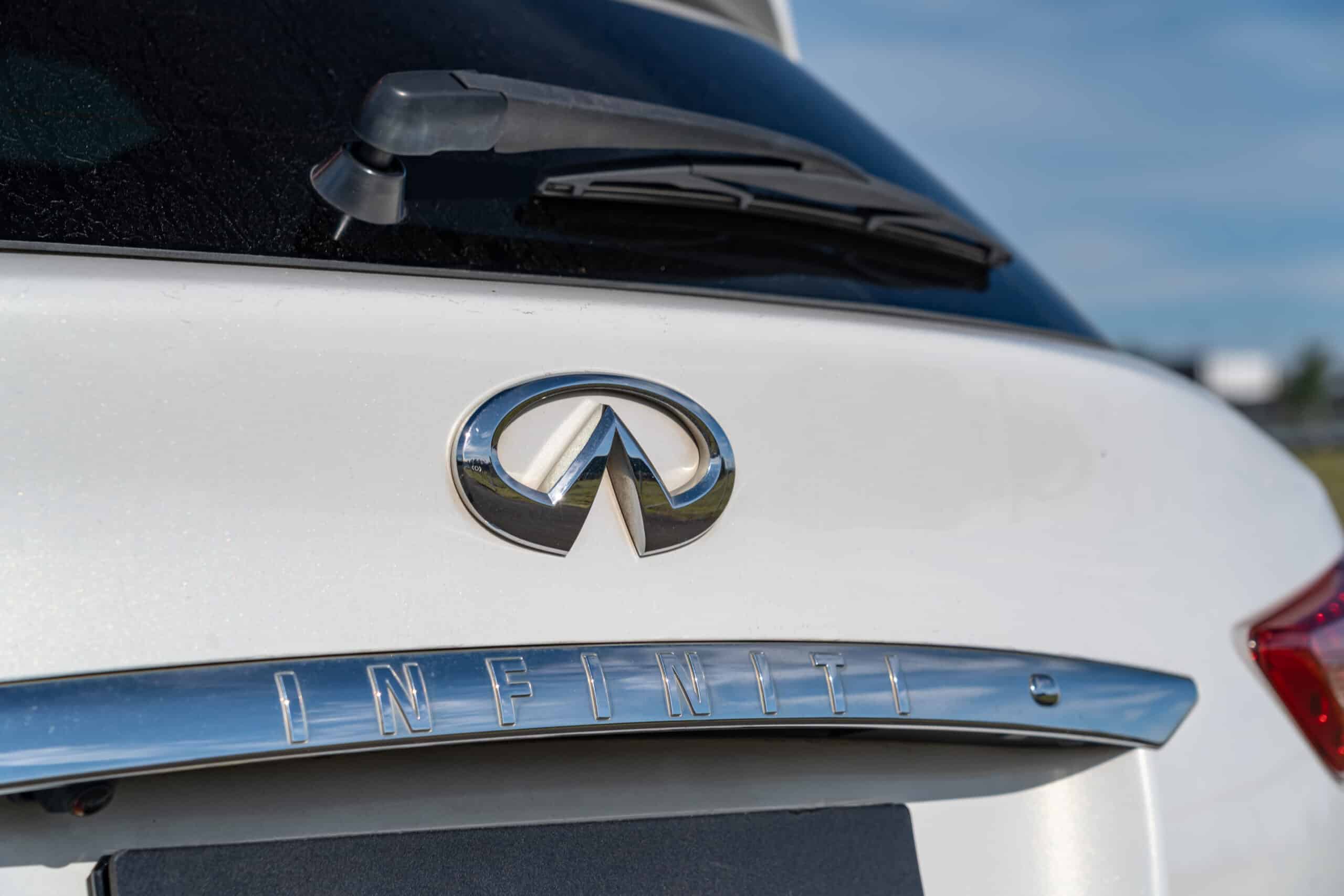
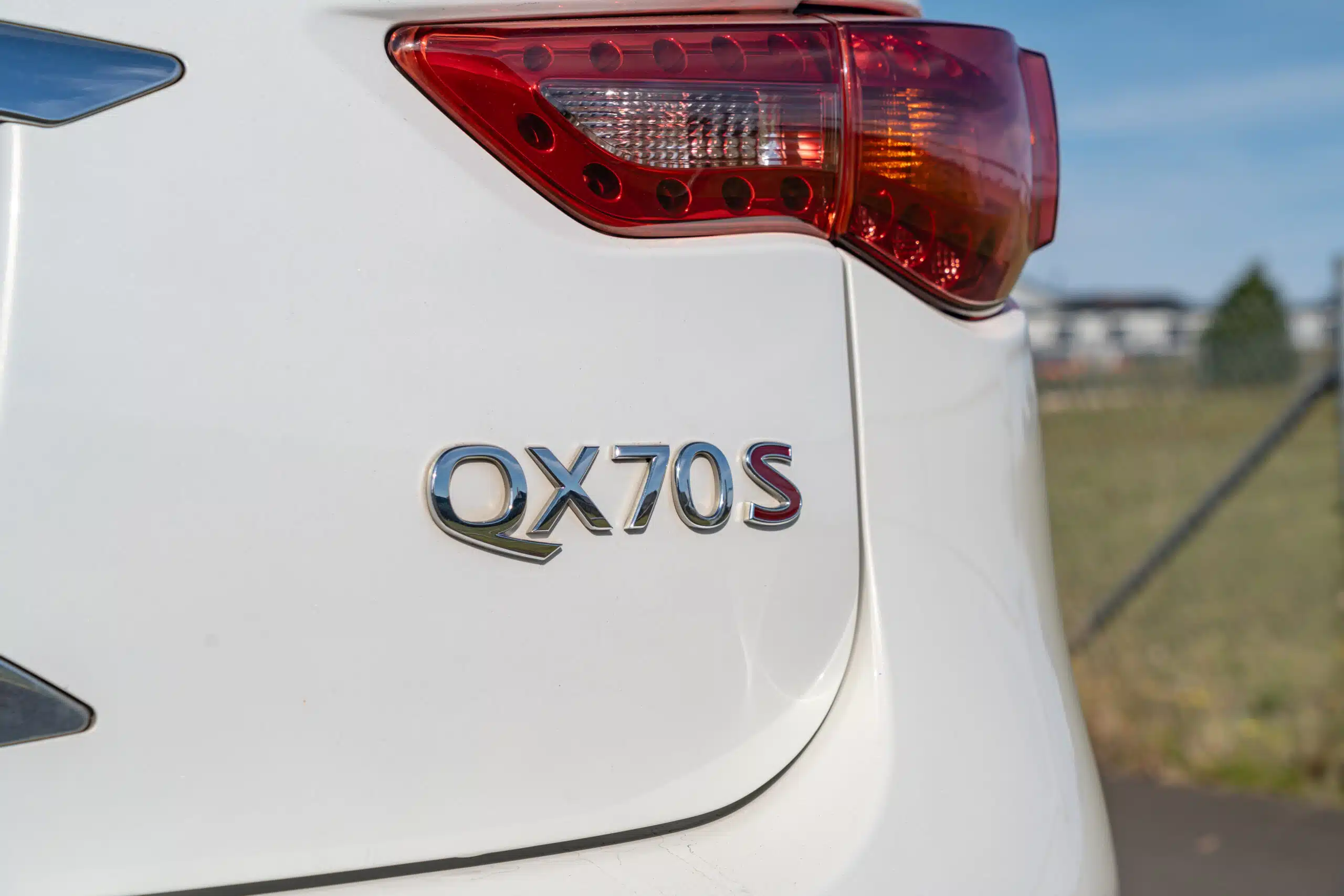
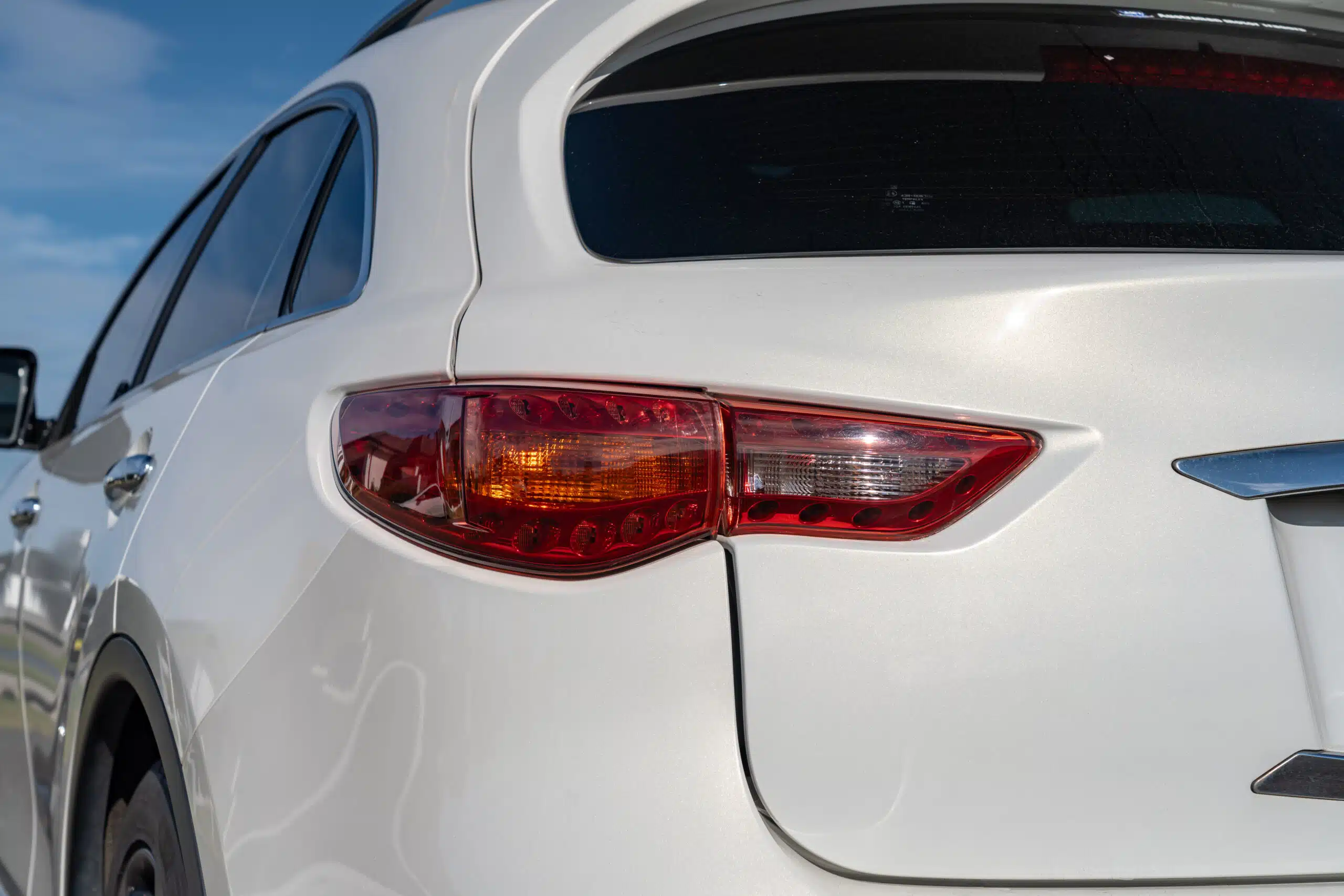
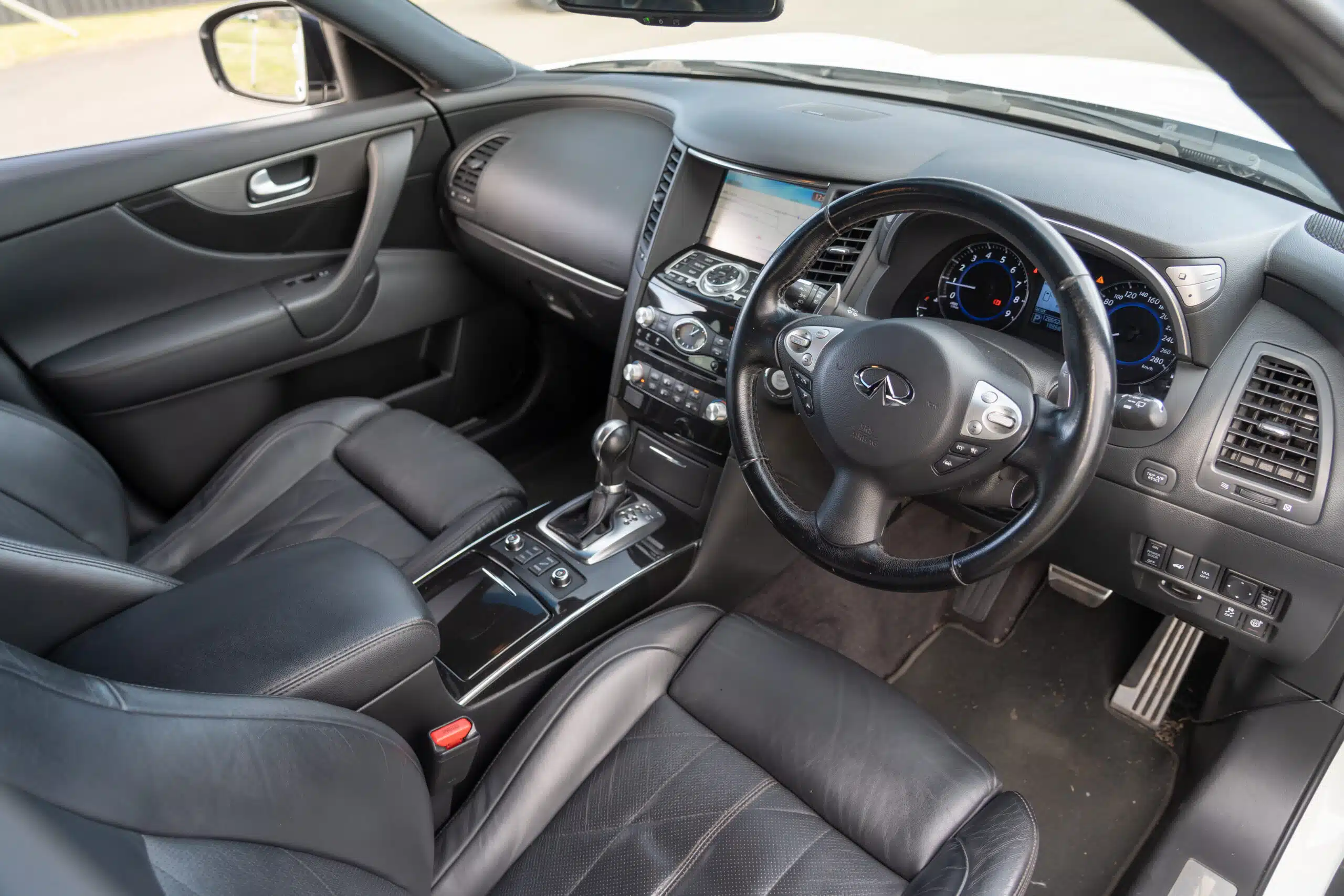
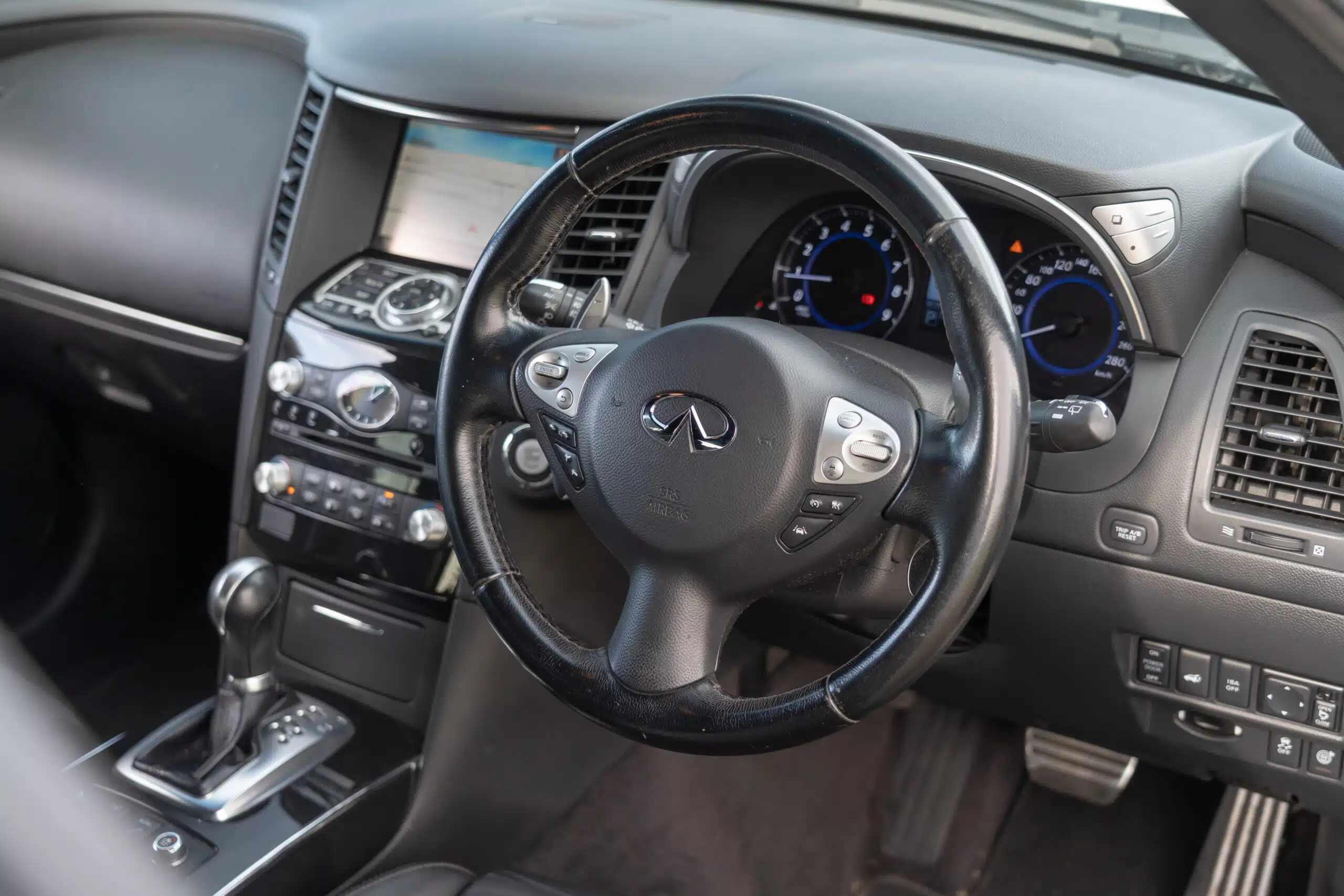
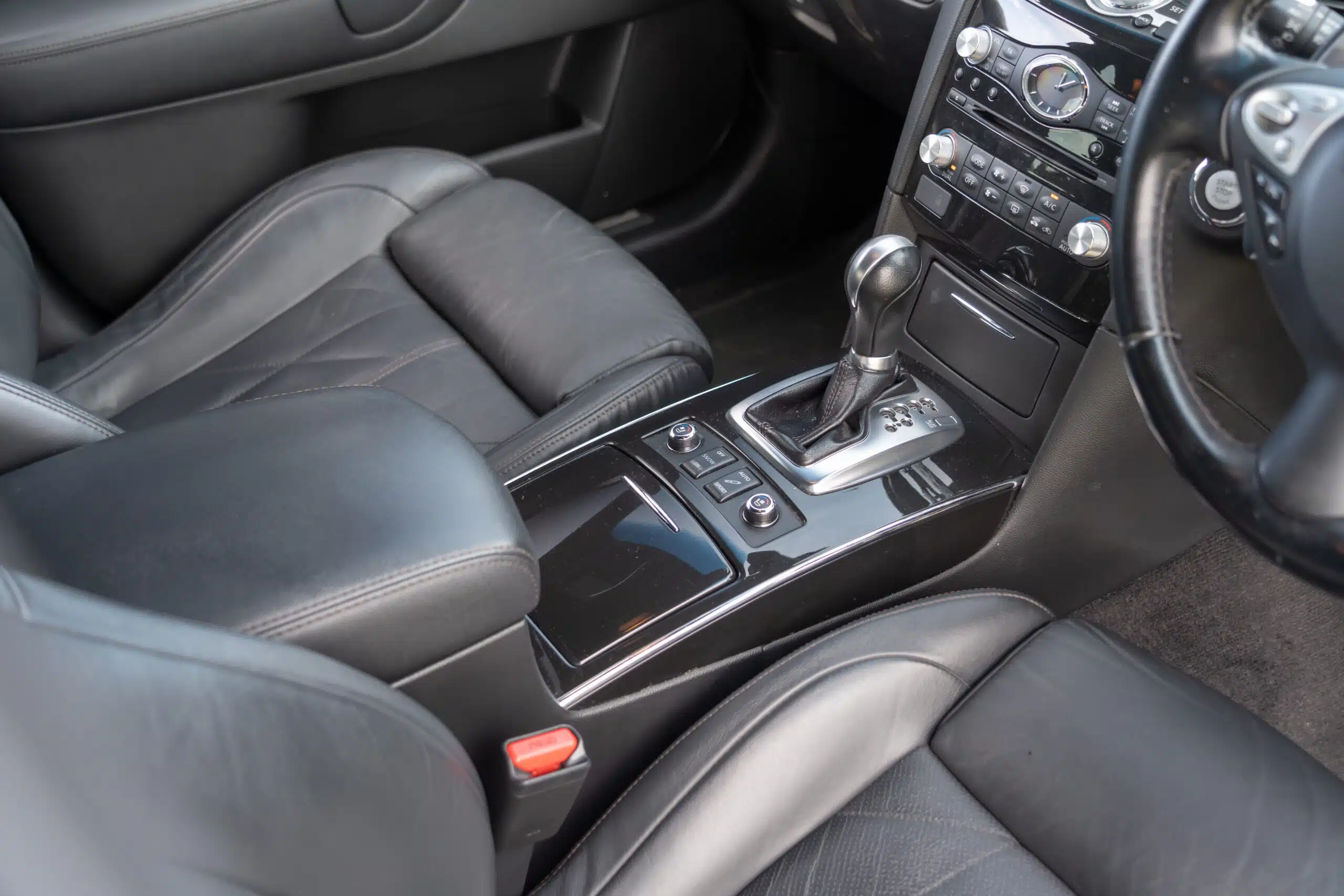
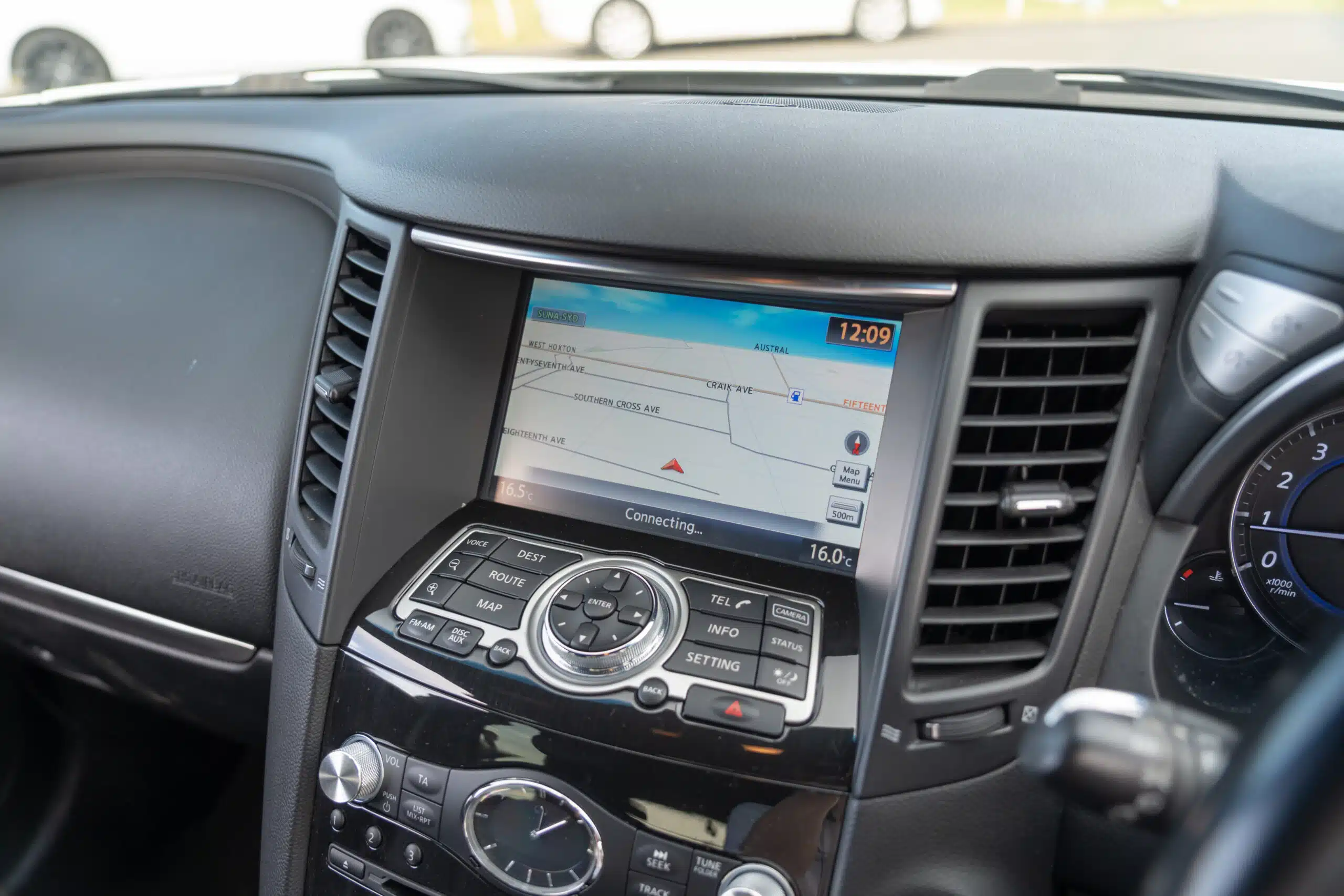
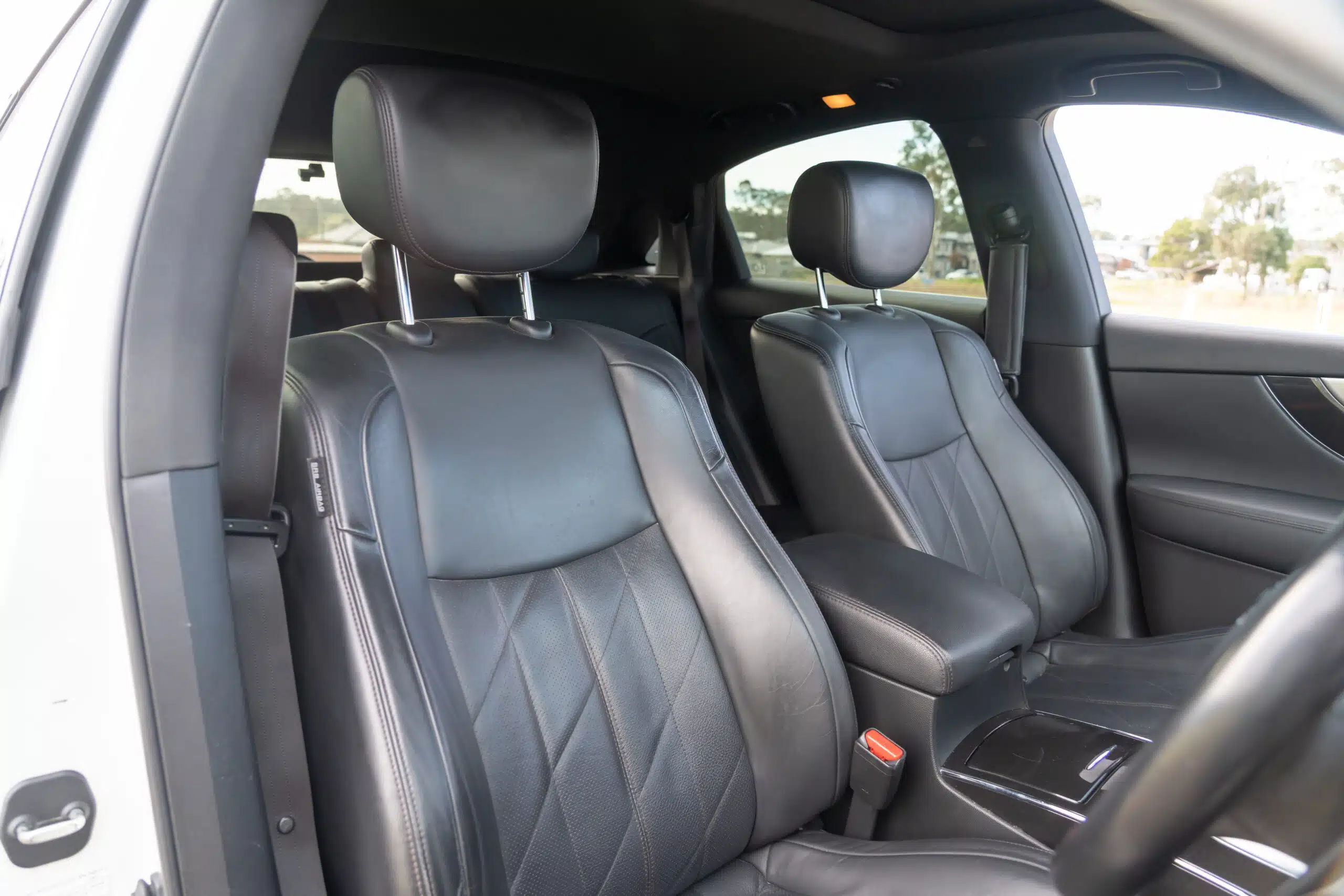
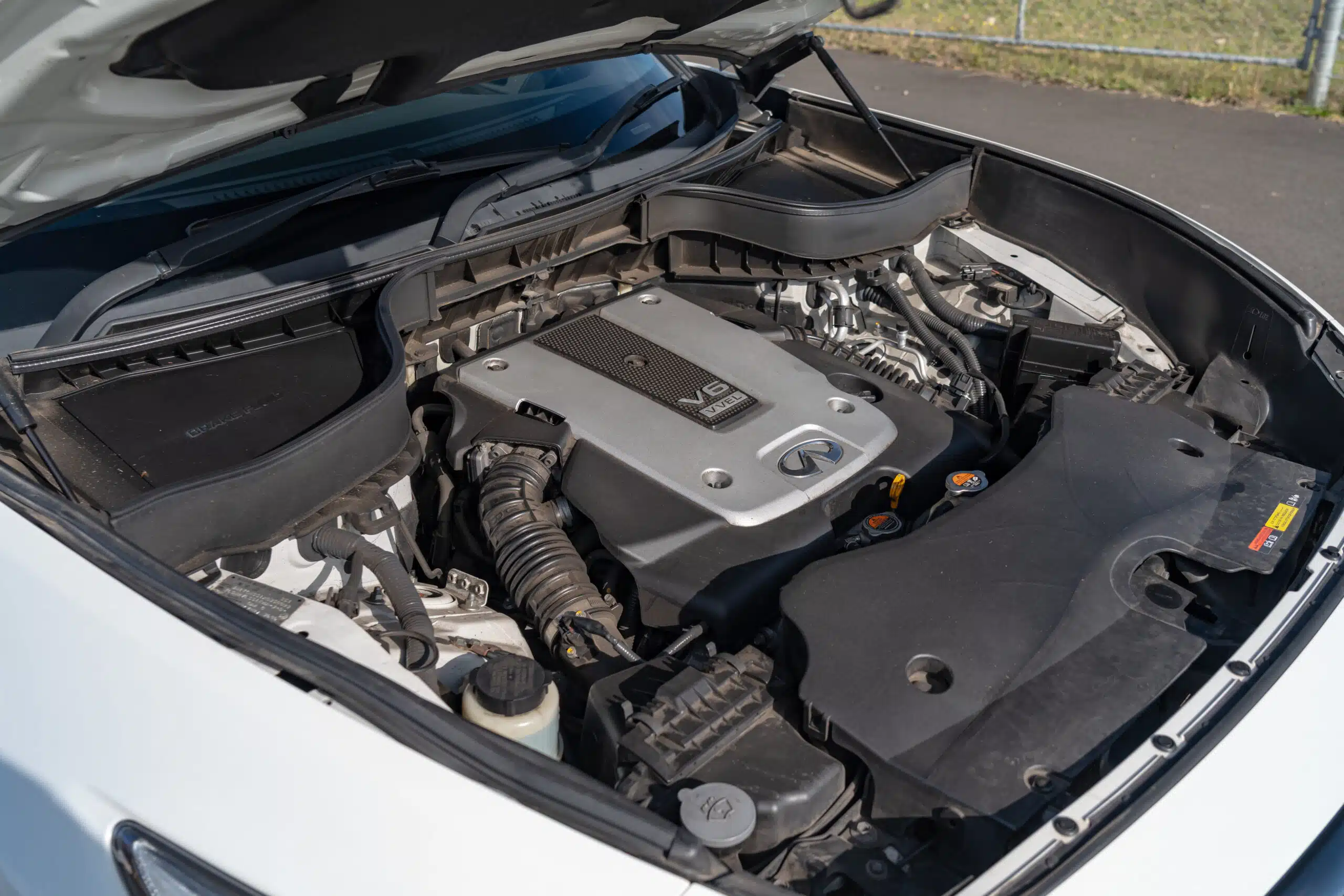
















Exterior:
Like many vehicles equipped with a sunroof, the drains in the FX and QX70 models can become blocked over time. If this happens and it’s left unresolved, water may leak into the interior and lead to electrical faults. However, if the drains are regularly cleaned and kept clear, problems are unlikely. In fact, documented cases of this issue occurring are surprisingly rare.
As for any other exterior faults, that’s essentially it, which is quite remarkable. Many of the Infiniti’s direct competitors when new, including the BMW X5, Mercedes-Benz M-Class or GLE, Porsche Cayenne, Land Rover Discovery, and Audi Q7, are known for a wide range of issues such as inconsistent panel alignment, problematic exterior electrics, poor paint quality, and water ingress. Yet the FX/QX70 seems largely unaffected by these sorts of faults. It’s proven to be exceptionally robust in this regard.
Interior:
Inside, the most consistent criticism is aimed at the infotainment system, which has aged particularly poorly. Owners report that it’s slow to respond, glitchy, and resembles an outdated 1980s portable TV in terms of resolution. The Bluetooth system often drops out, and hands-free call quality is widely described as tinny and muffled. Unsurprisingly, most vehicles of this era are also lacking in modern connectivity features such as Apple CarPlay and Android Auto.
Fortunately, this can all be remedied. Aftermarket upgrades are readily available, allowing you to retrofit CarPlay and Android Auto to the factory screen, or replace the entire unit with a newer setup. Some owners have even installed tablet-style infotainment systems with matching trim panels, creating a factory-style appearance while modernising the interior significantly. Many report a noticeable improvement in audio quality from the existing Bose speaker system once the head unit is replaced — provided the original speakers haven’t degraded.
Upgrades to the Bluetooth microphone and 360-degree or reversing camera are also recommended, as the factory components are generally underwhelming. A few owners have taken the opportunity to add extra sound insulation to address reports of minor cabin noise intrusion, which is otherwise a rare complaint. However, caution is advised when sourcing infotainment upgrades, a number of owners have reported issues developing after 12 months or so, and in many cases, the suppliers either refused to assist or had ceased trading altogether.
Another small but recurring fault is failure of the instrument cluster backlighting. This is typically caused by worn LEDs, but fortunately it’s a relatively inexpensive repair, generally around $300. Otherwise, electrical faults throughout the cabin are minimal and largely isolated. Compared to its European rivals, the Infiniti presents far fewer issues when it comes to long-term interior electronics reliability.
It’s also worth noting that,
Exterior:
Like many vehicles equipped with a sunroof, the drains in the FX and QX70 models can become blocked over time. If this happens and it’s left unresolved, water may leak into the interior and lead to electrical faults. However, if the drains are regularly cleaned and kept clear, problems are unlikely. In fact, documented cases of this issue occurring are surprisingly rare.
As for any other exterior faults, that’s essentially it, which is quite remarkable. Many of the Infiniti’s direct competitors when new, including the BMW X5, Mercedes-Benz M-Class or GLE, Porsche Cayenne, Land Rover Discovery, and Audi Q7, are known for a wide range of issues such as inconsistent panel alignment, problematic exterior electrics, poor paint quality, and water ingress. Yet the FX/QX70 seems largely unaffected by these sorts of faults. It’s proven to be exceptionally robust in this regard.
Interior:
Inside, the most consistent criticism is aimed at the infotainment system, which has aged particularly poorly. Owners report that it’s slow to respond, glitchy, and resembles an outdated 1980s portable TV in terms of resolution. The Bluetooth system often drops out, and hands-free call quality is widely described as tinny and muffled. Unsurprisingly, most vehicles of this era are also lacking in modern connectivity features such as Apple CarPlay and Android Auto.
Fortunately, this can all be remedied. Aftermarket upgrades are readily available, allowing you to retrofit CarPlay and Android Auto to the factory screen, or replace the entire unit with a newer setup. Some owners have even installed tablet-style infotainment systems with matching trim panels, creating a factory-style appearance while modernising the interior significantly. Many report a noticeable improvement in audio quality from the existing Bose speaker system once the head unit is replaced — provided the original speakers haven’t degraded.
Upgrades to the Bluetooth microphone and 360-degree or reversing camera are also recommended, as the factory components are generally underwhelming. A few owners have taken the opportunity to add extra sound insulation to address reports of minor cabin noise intrusion, which is otherwise a rare complaint. However, caution is advised when sourcing infotainment upgrades, a number of owners have reported issues developing after 12 months or so, and in many cases, the suppliers either refused to assist or had ceased trading altogether.
Another small but recurring fault is failure of the instrument cluster backlighting. This is typically caused by worn LEDs, but fortunately it’s a relatively inexpensive repair, generally around $300. Otherwise, electrical faults throughout the cabin are minimal and largely isolated. Compared to its European rivals, the Infiniti presents far fewer issues when it comes to long-term interior electronics reliability.
It’s also worth noting that, like many modern vehicles, the interior’s gloss black plastic trim is prone to scratching and marking. That said, owners suggest it holds up better than that of many competing models.
Mechanically:
3.7L V6 Petrol (VQ37VHR):
The 3.7-litre V6 is a proven unit, but not without its known issues. Oil leaks from the valve covers and oil cooler are common, often resulting in oil seeping into the spark plug tubes, which can drown the ignition coils, a particularly widespread problem.
It also features an internal water pump driven by the timing chain. While this can be replaced with the engine in the vehicle via small access panels, it requires care, dropping a bolt into the timing cover can be a frustrating experience.
Another known issue is low oil pressure at idle, typically caused by a failed oil gallery gasket. If ignored, this can affect timing chain performance and cause long-term damage to the valve-train. Timing chain reliability is generally good, but poor servicing history will accelerate wear and lead to chain rattle. While the tensioners can be replaced externally as a short-term fix, it’s preferable to address the gallery gaskets, timing chains, and water pump as a complete package.
The cooling system is not inherently problematic, but this engine is sensitive to overheating. Even a minor issue such as a failed thermostat or split hose can lead to major engine damage. Head gasket failure is likely if overheated, and continued operation can necessitate full engine replacement.
Camshaft and crankshaft position sensors are also known to fail, usually causing starting difficulties or sudden stalling.
Mechanically – 5.0L V8 Petrol (VK50VE):
The 5.0-litre V8 is generally regarded as highly reliable. Variable Valve Lift (VVL) issues can occur, but are uncommon and typically caused by poor servicing rather than inherent design faults.
Timing chain failures are rare, but higher-mileage examples can suffer from chain stretch, worn guides, or timing correlation issues. A tell-tale sign is a loud squealing noise, which can resemble a slipping belt, a clear indication that immediate attention is required.
Uniquely for a V8 in this class, the VK50’s timing chains are located at the front of the engine, allowing them to be replaced with the engine still in place. While still not a cheap job, it’s significantly more cost-effective than similar repairs on European competitors.
The most frequent complaint with this engine is oil consumption. These engines are known to use oil, so it’s important to monitor levels regularly. Low oil can cause starvation issues, which is especially dangerous in a complex, high-performance engine such as this.
Mechanically – 3.0L V6 Diesel (V9X):
The 3.0-litre turbo-diesel V6, a joint development between Nissan and Renault, has a reputation that suffers from its associations, but in reality, it’s not a bad engine.
It can suffer from many of the same problems that affect other modern diesels, including EGR valve issues (which are relatively inexpensive to fix), and occasional DPF problems. However, before committing to a costly DPF replacement, check for boost leaks from split hoses or intercooler damage, and a clogged MAP sensor, all of which are common causes of poor performance and are far cheaper to address.
Routine replacement of the fuel filter every 20,000 km is highly recommended to prevent premature wear in the fuel system. Thankfully, most of the fuel system components are well supported by the aftermarket and remain relatively affordable.
Overall – Engines:
All engine options in the FX and QX70 range are heavily insulated for noise and vibration, which contributes to a quiet and refined driving experience. However, this insulation traps heat and leads to greater thermal cycling. Over time, the repeated heat soak causes accelerated wear on rubber, plastic, and electronic components. By the 15-year mark, expect to deal with brittle hoses, failing connectors, and random component fatigue, especially in higher-mileage examples.
Transmission & Driveline:
Transmission-wise, the FX/QX70 units can experience issues with transmission speed sensors and solenoids. In most cases, rather than replacing individual components, the entire valve body is replaced.
The rear differential mounting bushes are also a known weak point, with premature wear causing audible clunks from the rear end. While not catastrophic, it’s a common issue to be aware of, particularly in higher-kilometre vehicles.
Exterior:
Like many vehicles equipped with a sunroof, the drains in the FX and QX70 models can become blocked over time. If this happens and it’s left unresolved, water may leak into the interior and lead to electrical faults. However, if the drains are regularly cleaned and kept clear, problems are unlikely. In fact, documented cases of this issue occurring are surprisingly rare.
As for any other exterior faults, that’s essentially it, which is quite remarkable. Many of the Infiniti’s direct competitors when new, including the BMW X5, Mercedes-Benz M-Class or GLE, Porsche Cayenne, Land Rover Discovery, and Audi Q7, are known for a wide range of issues such as inconsistent panel alignment, problematic exterior electrics, poor paint quality, and water ingress. Yet the FX/QX70 seems largely unaffected by these sorts of faults. It’s proven to be exceptionally robust in this regard.
Interior:
Inside, the most consistent criticism is aimed at the infotainment system, which has aged particularly poorly. Owners report that it’s slow to respond, glitchy, and resembles an outdated 1980s portable TV in terms of resolution. The Bluetooth system often drops out, and hands-free call quality is widely described as tinny and muffled. Unsurprisingly, most vehicles of this era are also lacking in modern connectivity features such as Apple CarPlay and Android Auto.
Fortunately, this can all be remedied. Aftermarket upgrades are readily available, allowing you to retrofit CarPlay and Android Auto to the factory screen, or replace the entire unit with a newer setup. Some owners have even installed tablet-style infotainment systems with matching trim panels, creating a factory-style appearance while modernising the interior significantly. Many report a noticeable improvement in audio quality from the existing Bose speaker system once the head unit is replaced — provided the original speakers haven’t degraded.
Upgrades to the Bluetooth microphone and 360-degree or reversing camera are also recommended, as the factory components are generally underwhelming. A few owners have taken the opportunity to add extra sound insulation to address reports of minor cabin noise intrusion, which is otherwise a rare complaint. However, caution is advised when sourcing infotainment upgrades, a number of owners have reported issues developing after 12 months or so, and in many cases, the suppliers either refused to assist or had ceased trading altogether.
Another small but recurring fault is failure of the instrument cluster backlighting. This is typically caused by worn LEDs, but fortunately it’s a relatively inexpensive repair, generally around $300. Otherwise, electrical faults throughout the cabin are minimal and largely isolated. Compared to its European rivals, the Infiniti presents far fewer issues when it comes to long-term interior electronics reliability.
It’s also worth noting that, like many modern vehicles, the interior’s gloss black plastic trim is prone to scratching and marking. That said, owners suggest it holds up better than that of many competing models.
Mechanically:
3.7L V6 Petrol (VQ37VHR):
The 3.7-litre V6 is a proven unit, but not without its known issues. Oil leaks from the valve covers and oil cooler are common, often resulting in oil seeping into the spark plug tubes, which can drown the ignition coils, a particularly widespread problem.
It also features an internal water pump driven by the timing chain. While this can be replaced with the engine in the vehicle via small access panels, it requires care, dropping a bolt into the timing cover can be a frustrating experience.
Another known issue is low oil pressure at idle, typically caused by a failed oil gallery gasket. If ignored, this can affect timing chain performance and cause long-term damage to the valve-train. Timing chain reliability is generally good, but poor servicing history will accelerate wear and lead to chain rattle. While the tensioners can be replaced externally as a short-term fix, it’s preferable to address the gallery gaskets, timing chains, and water pump as a complete package.
The cooling system is not inherently problematic, but this engine is sensitive to overheating. Even a minor issue such as a failed thermostat or split hose can lead to major engine damage. Head gasket failure is likely if overheated, and continued operation can necessitate full engine replacement.
Camshaft and crankshaft position sensors are also known to fail, usually causing starting difficulties or sudden stalling.
Mechanically – 5.0L V8 Petrol (VK50VE):
The 5.0-litre V8 is generally regarded as highly reliable. Variable Valve Lift (VVL) issues can occur, but are uncommon and typically caused by poor servicing rather than inherent design faults.
Timing chain failures are rare, but higher-mileage examples can suffer from chain stretch, worn guides, or timing correlation issues. A tell-tale sign is a loud squealing noise, which can resemble a slipping belt, a clear indication that immediate attention is required.
Uniquely for a V8 in this class, the VK50’s timing chains are located at the front of the engine, allowing them to be replaced with the engine still in place. While still not a cheap job, it’s significantly more cost-effective than similar repairs on European competitors.
The most frequent complaint with this engine is oil consumption. These engines are known to use oil, so it’s important to monitor levels regularly. Low oil can cause starvation issues, which is especially dangerous in a complex, high-performance engine such as this.
Mechanically – 3.0L V6 Diesel (V9X):
The 3.0-litre turbo-diesel V6, a joint development between Nissan and Renault, has a reputation that suffers from its associations, but in reality, it’s not a bad engine.
It can suffer from many of the same problems that affect other modern diesels, including EGR valve issues (which are relatively inexpensive to fix), and occasional DPF problems. However, before committing to a costly DPF replacement, check for boost leaks from split hoses or intercooler damage, and a clogged MAP sensor, all of which are common causes of poor performance and are far cheaper to address.
Routine replacement of the fuel filter every 20,000 km is highly recommended to prevent premature wear in the fuel system. Thankfully, most of the fuel system components are well supported by the aftermarket and remain relatively affordable.
Overall – Engines:
All engine options in the FX and QX70 range are heavily insulated for noise and vibration, which contributes to a quiet and refined driving experience. However, this insulation traps heat and leads to greater thermal cycling. Over time, the repeated heat soak causes accelerated wear on rubber, plastic, and electronic components. By the 15-year mark, expect to deal with brittle hoses, failing connectors, and random component fatigue, especially in higher-mileage examples.
Transmission & Driveline:
Transmission-wise, the FX/QX70 units can experience issues with transmission speed sensors and solenoids. In most cases, rather than replacing individual components, the entire valve body is replaced.
The rear differential mounting bushes are also a known weak point, with premature wear causing audible clunks from the rear end. While not catastrophic, it’s a common issue to be aware of, particularly in higher-kilometre vehicles.
Something else worth thinking about if you’re still on the fence, when we dug through the owners’ forums and community groups, we were genuinely surprised by just how passionate QX70 and FX owners are about these cars. We’re talking next-level love here. So many owners who’ve considered upgrading or replacing theirs have said they just couldn’t find anything else that ticks all the same boxes, especially not for the money.
And interestingly, according to several forum members who work in Nissan or Infiniti service departments, aside from the mighty R35 GT-R, these are considered among the best-built and most reliable vehicles Infiniti or Nissan has ever produced. High praise, and it lines up with what many long-term owners are saying.
The thing is, for what these are selling for now on the used market, there are very few SUVs out there that deliver the same blend of style, performance, comfort, equipment, and reliability and in a package that stands out from the crowd. Of course, as with any used performance SUV, it’s absolutely essential that any example you’re looking at passes a thorough pre-purchase inspection, and you’ll need to be ready for a few challenges when it comes to sourcing some of the rarer Infiniti-specific parts.
But, if you’re a car enthusiast who wants something that’s genuinely different, offers real driving enjoyment, plenty of practicality, and now sits in a price bracket that makes it seriously tempting, you should absolutely be putting the FX or QX70
Something else worth thinking about if you’re still on the fence, when we dug through the owners’ forums and community groups, we were genuinely surprised by just how passionate QX70 and FX owners are about these cars. We’re talking next-level love here. So many owners who’ve considered upgrading or replacing theirs have said they just couldn’t find anything else that ticks all the same boxes, especially not for the money.
And interestingly, according to several forum members who work in Nissan or Infiniti service departments, aside from the mighty R35 GT-R, these are considered among the best-built and most reliable vehicles Infiniti or Nissan has ever produced. High praise, and it lines up with what many long-term owners are saying.
The thing is, for what these are selling for now on the used market, there are very few SUVs out there that deliver the same blend of style, performance, comfort, equipment, and reliability and in a package that stands out from the crowd. Of course, as with any used performance SUV, it’s absolutely essential that any example you’re looking at passes a thorough pre-purchase inspection, and you’ll need to be ready for a few challenges when it comes to sourcing some of the rarer Infiniti-specific parts.
But, if you’re a car enthusiast who wants something that’s genuinely different, offers real driving enjoyment, plenty of practicality, and now sits in a price bracket that makes it seriously tempting, you should absolutely be putting the FX or QX70 right at the very pointy end of your list.
Something else worth thinking about if you’re still on the fence, when we dug through the owners’ forums and community groups, we were genuinely surprised by just how passionate QX70 and FX owners are about these cars. We’re talking next-level love here. So many owners who’ve considered upgrading or replacing theirs have said they just couldn’t find anything else that ticks all the same boxes, especially not for the money.
And interestingly, according to several forum members who work in Nissan or Infiniti service departments, aside from the mighty R35 GT-R, these are considered among the best-built and most reliable vehicles Infiniti or Nissan has ever produced. High praise, and it lines up with what many long-term owners are saying.
The thing is, for what these are selling for now on the used market, there are very few SUVs out there that deliver the same blend of style, performance, comfort, equipment, and reliability and in a package that stands out from the crowd. Of course, as with any used performance SUV, it’s absolutely essential that any example you’re looking at passes a thorough pre-purchase inspection, and you’ll need to be ready for a few challenges when it comes to sourcing some of the rarer Infiniti-specific parts.
But, if you’re a car enthusiast who wants something that’s genuinely different, offers real driving enjoyment, plenty of practicality, and now sits in a price bracket that makes it seriously tempting, you should absolutely be putting the FX or QX70 right at the very pointy end of your list.
Have ultimate peace of mind when buying a used car by purchasing an official PPSR report.
Please note that pricing information is subject to fluctuations in the automotive market.
Information correct as of July 18, 2025.
The advice provided on this website is general advice only. It has been prepared without taking into account your objectives, financial situation or needs. Before acting on this advice, you should consider the appropriateness of the advice, having regard to your own objectives, financial situation and needs.
Read our full terms and conditions here.
You are the best, the content in your videos is so helpful, delivered in a great way. Please keep going as for sure you are unique in every way. All the best from Guatemala
L. G. - YouTube
You guys have truly found something wonderful… Loved this channel ever since from the beginning… Will support you guys as long as you guys keep making these wonderful car reviews…
Calvin - YouTube
This is probably the best channel I have ever seen when reviewing vehicles. New or old. The honesty is so appreciated. I’ve been a mechanic for 20 years and I find it very informative when looking for a vehicle for my daughter. Keep up the awesome work.
Jason T. - YouTube
© 2025 ReDriven All Rights Reserved